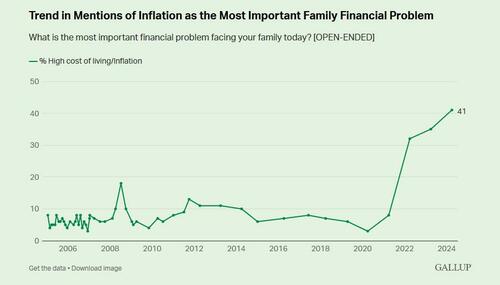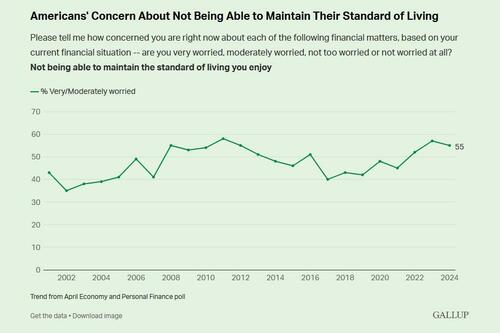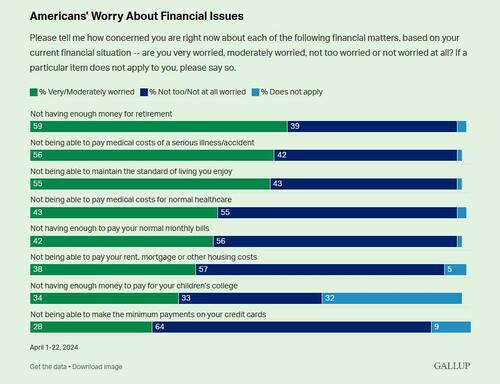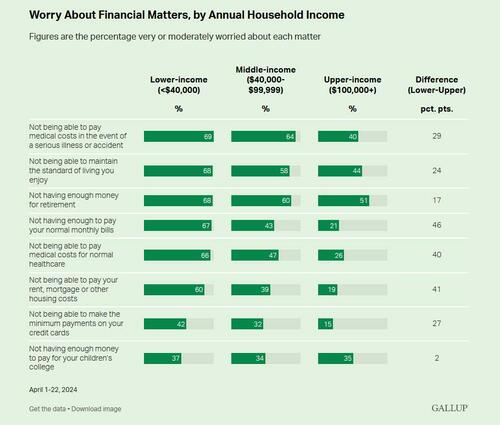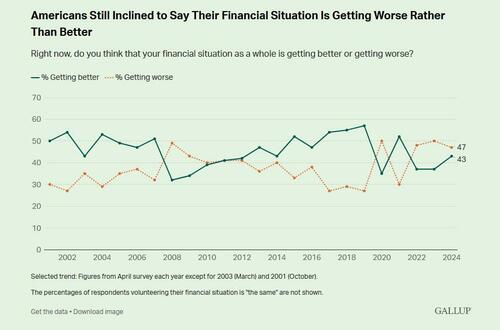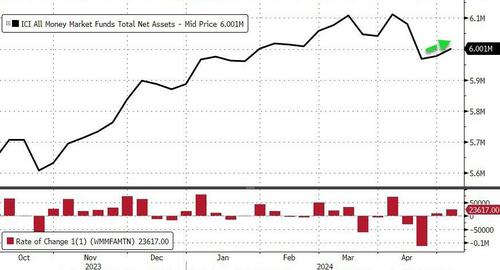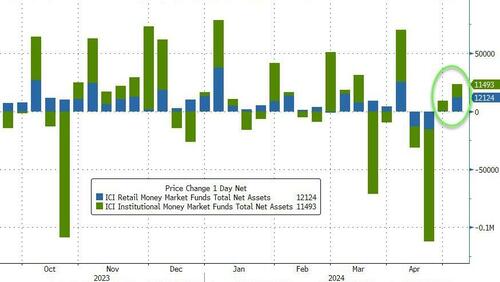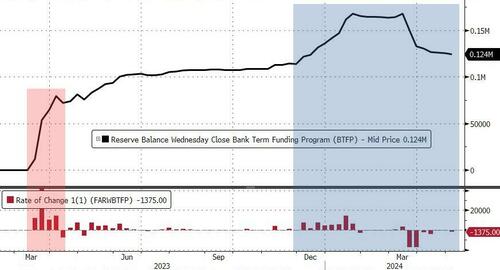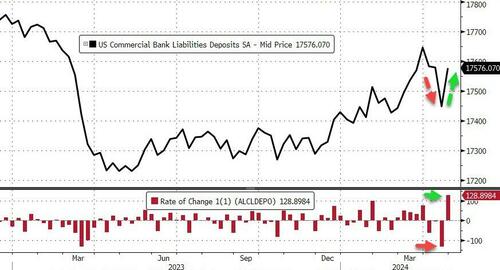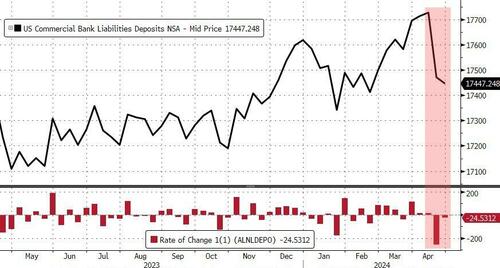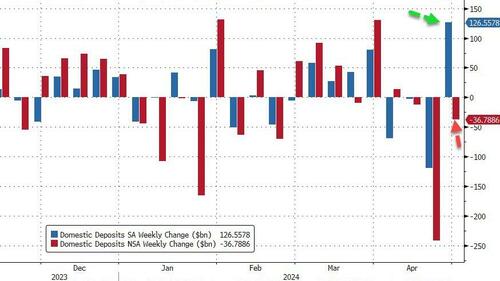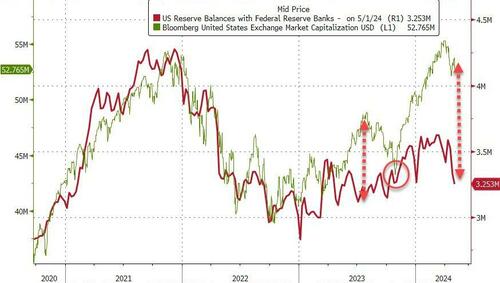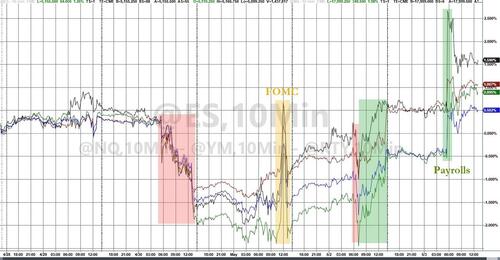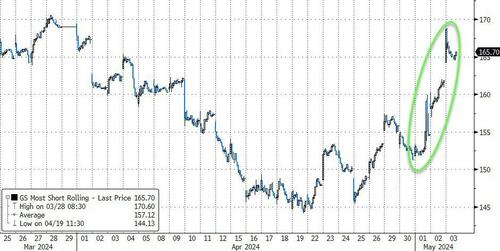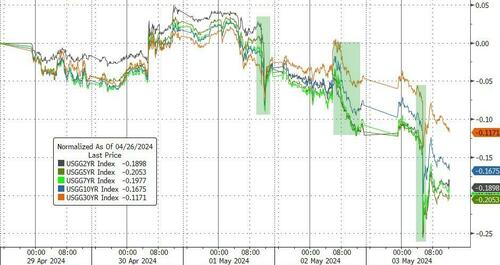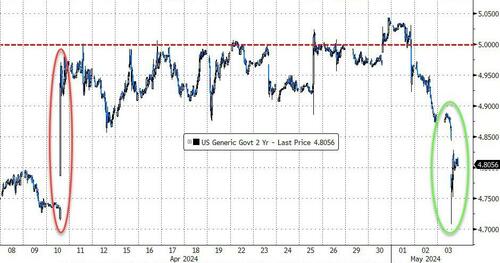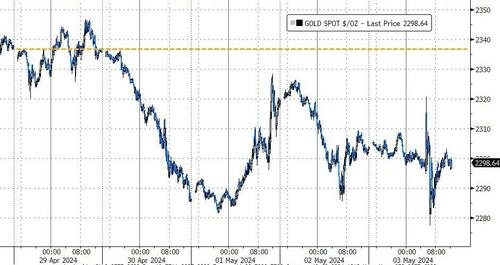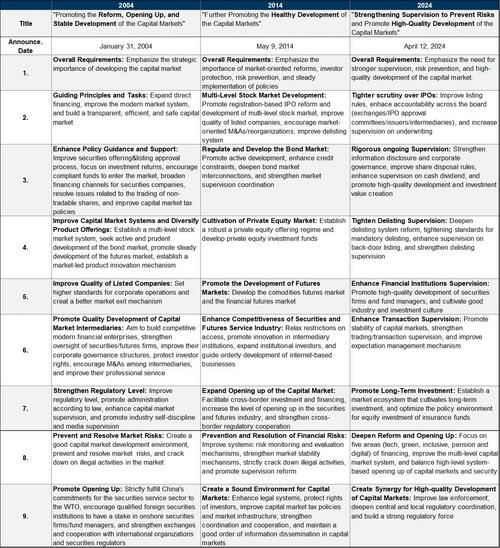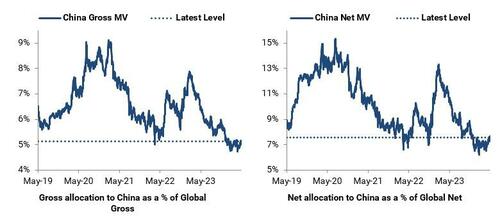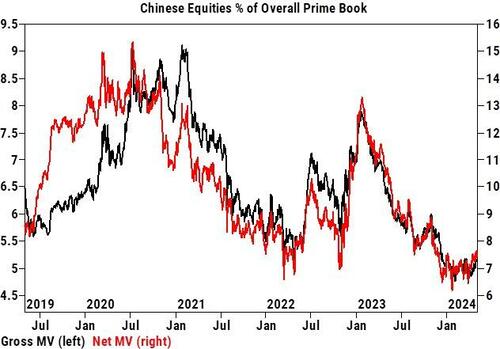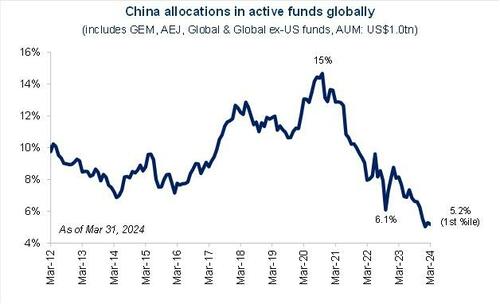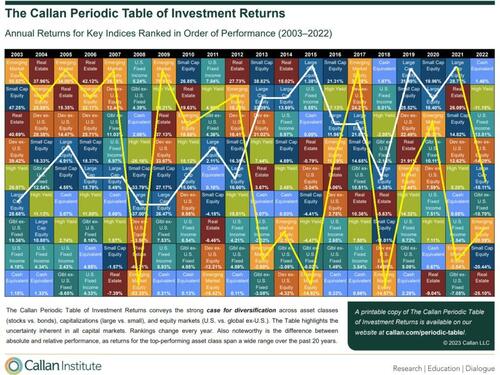For many people today, practical atheism is the normal rule of life...If this attitude becomes a general existential position, then freedom no longer has any standards, then everyting is possible and permissible.
Distinction Matter - Subscribed Feeds
-
Site: Crisis Magazine

The Dream of Gerontius—a masterful mix of lyricism and theology—was written in 1865 by John Henry Newman, who, having left the Anglican communion twenty years before, straightaway became England’s most famous convert to the True Faith, which he could only find in the Church of Rome. Set down in a series of seven rhymed sections numbering fifty-plus pages, the book became an immediate bestseller…
-
Site: Edward FeserAt The Catholic Thing, Diane Montagna interviews me about the Vatican’s recent Declaration Dignitas Infinita.
-
Site: Mises InstituteIn publicly opposing Apartheid, William H. Hutt saw how legal segregation deprived black South Africans from pursuing legitimate economic goals. To Hutt, Apartheid deprived people of equality of economic opportunity, which kept them in poverty.
-
Site: Mises InstituteIs Consumer Confidence a reliable indicator of the current economy?
-
Site: Mises InstituteVast sums are spent on “reforming” government schools, only to end up with the same lousy product. Thinking outside the box means abandoning public schools altogether.
-
Site: The Unz Review[Adapted from the latest Radio Derb, now available exclusively on VDARE.com] Last week the U.S. House of Representatives passed the Antisemitism Awareness Act, giving the federal Department of Education the power to cut off funding to schools and colleges that tolerate “Antisemitism”—as defined in the Act. From the account given in The Washington Post, it...
-
Site: The Unz ReviewIn the third weekly episode of “Playing President,” Ray McGovern, 27-year CIA veteran and briefer of five presidents, continues to make sense of the world to “President” Scheer, who prepared for this role through his decades as a journalist, including in-depth interviews with five presidents from Nixon to Clinton. This week the focus is on...
-
Site: The Unz ReviewThe Economist Philip Pilkington wrote an essay on what he called “Capitalism’s Overlooked Contradiction”. He identified this contradiction as the “tendency of the rate of people to fall.” Pilkington was here borrowing from Marx, whose prediction of a necessary collapse of capitalism and transition to communism was premised on a fundamental contradiction he believed he...
-
Site: The Catholic Thing
DIANE MONTAGNA (DM): Dignitas infinita opens by asserting that: “Every human person possesses an infinite dignity, inalienably grounded in his or her very being, which prevails in and beyond every circumstance, state, or situation the person may ever encounter.” Yet St. Thomas Aquinas writes: “God alone is of infinite dignity, and so he alone, in the flesh assumed by him, could adequately satisfy for man.” (Solus autem Deus est infinitae dignitatis, qui carne assumpta pro homine sufficienter satisfacere poterat.)
At the Vatican press conference to present the new Declaration, Cardinal Victor Manuel Fernández noted that the expression “infinite dignity” was taken from a 1980 address by Pope John Paul II in Osnabrück, Germany. JPII said: “God has shown us with Jesus Christ in an unsurpassable manner how he loves each man and thereby endows him with infinite dignity.”
The new Declaration seems to ground that dignity explicitly in nature, and not just in grace. Does the Declaration therefore collapse the distinction between the natural and supernatural?
EDWARD FESER (EF): One of the problems with Dignitas infinita, as with certain other documents issued during Pope Francis’s pontificate, is that key theological terms are not used with precision. Much of the force of the statements derives from their rhetorical power rather than from careful reasoning. So, one must be cautious when trying to determine what strictly follows from them. What can be said, though, is that precisely because of this imprecision, there is a danger of seeming to license certain problematic conclusions. The blurring of the line between the natural and the supernatural would be an example. For instance, the realization of the beatific vision would obviously afford a human being the highest dignity of which he is capable. Hence, if we say that human beings by nature, and not just by grace, have an “infinite dignity,” that might seem to imply that by nature they are directed toward the beatific vision.
Defenders of the Declaration would no doubt emphasize that the document itself does not draw such an extreme conclusion. And that is true. The problem, though, is that exactly what is and is not ruled out by attributing “infinite dignity” to human nature is not foreseen or addressed in the Declaration. Yet at the same time, the Declaration puts great emphasis on the notion and on its radical implications. This is a recipe for creating problems, and the document itself creates such problems in its application of the notion of “infinite dignity” to the death penalty, among other topics.
Also, the significance of Pope St John Paul II’s 1980s remark has been greatly overstated. He referred to “infinite dignity” in passing in a minor address, of low magisterial weight, devoted to another topic. Nor does he draw any novel or momentous conclusions from it. It was an off-the-cuff remark rather than a precise formula, and he was not making it in the course of a carefully thought-out formal doctrinal treatment of the nature of human dignity. But in any event, he does not ground this notion of infinite dignity in human nature itself.
DM: Historically, how did we get from St Thomas’s assertion that “God alone is of infinite dignity” to the new DDF Declaration? Is this a misuse of Pope John Paul II’s words?
EF: There are two key factors here. One of them is the increasing reliance in the decades since Vatican II on notions like personhood, human dignity, and the like as vehicles by which to convey Catholic moral teaching to the secular world. There is nothing inherently wrong with these concepts, but considered by themselves they are open to a wide variety of interpretations. Secular thinkers certainly do not necessarily understand them the way the Church does, so that the appearance of common ground can be illusory.
When these notions are very tightly rooted in and expounded in light of the Catholic philosophical and theological tradition represented by Augustine, Aquinas, and the like, there is no problem. But often the rhetoric of personhood and dignity takes on a life of its own, and gets ramped up as a way of trying to convince people who are likely to turn a deaf ear to appeals to natural law or scripture. And it often ends up reflecting a conception of persons and their dignity that owes much to Kant, and to modern philosophical liberalism’s tendency to regard coercion of persons as the greatest evil and their self-determination as the height of their fulfilment. Then Catholics can too easily read these modern conceptions of personal dignity back into scripture and the tradition.
This brings us to the second key factor, which is the remarkable fixation in recent decades within Catholic circles on the death penalty as somehow especially problematic. There has always been a strain in the tradition that tended toward a more negative attitude toward the death penalty, co-existing with a strain that is more positive toward it. They balanced one another out historically, with one tendency prevailing at some times and the other at other times. But the right of the state in principle to inflict this penalty was never denied, as it has a clear and consistent basis in scripture and natural law. What is unique in modern times is a tendency to look at the issue through the lens of justice rather than mercy, as if it were somehow unjust (and not merely unmerciful) to resort to capital punishment. And that reflects the increasingly ramped up rhetoric about the dignity of persons.
So these issues are very closely connected, and actually feed off of one another. The increasing reliance on the rhetoric of dignity has led to increasing hostility within certain Catholic circles to the very idea of capital punishment, even in principle. Part of the motivation for that is a desire to find some common moral vision with the modern secular Western view of things. But then, this often-over-the-top rhetoric against capital punishment has in turn fueled an even more exaggerated conception of human dignity as something so immeasurable that it would somehow be deeply wrong (and not just less than merciful) to execute even the most depraved and dangerous murderer.
That these conjoined rhetorical tendencies have now led to what appears to be a conflict with Scripture and the consistent magisterial teaching of two millennia on the topic of capital punishment should be an obvious warning sign that things have gone too far.
DM: According to Dignitas infinita, it is the “ontological dignity” of every human being that is “infinite.” The Declaration makes a fourfold distinction of the concept of dignity and asserts: “The most important among these is the ontological dignity that belongs to the person as such simply because he or she exists and is willed, created, and loved by God. Ontological dignity is indelible and remains valid beyond any circumstances in which the person may find themselves.” [7] It sounds like the Declaration is speaking about a dignity that is rooted in nature. What does “ontological dignity” mean according to the Declaration in your view?
EF: The point of saying that we have “ontological dignity” is to emphasize that there is a kind of dignity that is inseparable from our very being, rather than deriving from the acts we happen to perform, or the social status we happen to have, or the conditions in which we might find ourselves. Those other kinds of dignity can be gained or lost, but ontological dignity cannot be.
So far so good. That much is true and important. The problem is with any assertion that this dignity is “infinite” in some precise or literal sense. Specifically, there are two problems here. The first is that this purportedly infinite dignity is something we are alleged to possess by our very nature. As I’ve said, being oriented toward and then realizing the beatific vision would give us the highest dignity we’re capable of having. But we don’t have this orientation by nature, but only by grace. By grace we can thus surpass the dignity we have by nature. So, how could we possibly already have, just by nature, a dignity that is infinite?
Second, though, even if we’re just talking about the dignity that we do have by nature rather than by grace, it simply cannot be strictly correct to characterize it as infinite. Only God has or could have infinite ontological dignity, for reasons I have spelled out in detail in an article on the problems with Dignitas infinita. For example, dignitas conveys “worthiness,” “excellence,” “merit,” or “honor.” Replace the word “dignity” with any of those words in the phrase “infinite dignity” and ask yourself if the result could be applied to human beings. Do human beings have “infinite worthiness,” “infinite excellence,” or “infinite merit”? Are they deserving of “infinite honor”? Obviously not, and it would be blasphemous to say so. Those descriptions apply only to God.
Or consider the attributes that we ordinarily regard as affording a human being some special dignity, such as authority, goodness, or wisdom. Can human beings be said to possess “infinite authority,” “infinite goodness,” or “infinite wisdom”? Obviously not, and again, these things can in fact only be said of God.
The best way to read Dignitas infinita to make it consistent with tradition and sound theology is to take talk of our “infinite dignity” to be a rhetorical way of emphasizing that our dignity is immense or vast. But now the problem is that this rhetoric, so understood, will not do the work the Declaration wants to do with it. For even if we have “immense dignity” or “vast dignity,” that dignity would still have limits. And so we would no longer have a basis for the Declaration’s conclusion that certain things are ruled out by human dignity “beyond every circumstance,” “in all circumstances,” “regardless of the circumstances,” and so on.
Hence, though it draws an important distinction when it distinguishes “ontological dignity” from other kinds of dignity, the Declaration is, unfortunately, still imprecise and poorly reasoned overall. This distinction in no way saves it from the problems I’ve been describing. In fact, explicitly to focus on our ontological dignity and then say that that dignity is infinite only highlights the problems.
 Creation of Adam and Eve (from Frame of the Gate of Paradise) by Lorenzo Ghiberti, 1425-1452 [Baptistery of St. John at the Opera di Santa Maria del Fiore, Florence]
Creation of Adam and Eve (from Frame of the Gate of Paradise) by Lorenzo Ghiberti, 1425-1452 [Baptistery of St. John at the Opera di Santa Maria del Fiore, Florence]
DM: At the Vatican press conference, I asked Cardinal Fernández: “If man has infinite dignity, how can he be condemned to the eternal suffering of Hell?” He replied by saying that the possibility of man suffering eternally in Hell is grounded in human freedom, and that God respects man’s freedom even in this case. But if man’s quasi-infinite dignity is grounded in grace, it would seem that it only endures as long as we are alive in the wayfaring state or are dead and saved. Does the man who dies in the state of mortal sin have it (even potentially) any longer, since he no longer has the possibility of becoming part of Christ’s Mystical Body?
EF: This is a good example of a case where the exaggerated rhetoric about human dignity has potentially subversive implications. A dignity we have only by grace rather than by nature is a dignity we might lose, opening the way to eternal damnation. But if we not only have infinite dignity, but have it by nature, how could we ever be damned? Wouldn’t the natural concomitant of this infinite dignity be a will that is not capable of decisively choosing against God?
Of course, Cardinal Fernández does not say that in his answer, and I am not claiming he even thinks it. His remark about freedom does seem to allow that damnation is at least possible. But the point is that the high-flown but imprecise rhetoric of “infinite dignity” could very easily be taken in the opposite direction. It opens the door to all sorts of doctrinal mischief.
The remedy here, as always in the history of the Church, is to check novel formulations against scripture, the Fathers, the Doctors of the Church, the teaching of previous popes, and tradition in general. This is what the great theorists of doctrinal development, St. Vincent of Lérins and St. John Henry Newman, insist on, and it was what Pope Benedict XVI’s hermeneutic of continuity was about. When confronted with novel formulations or conclusions, we need to ask, “How does this square with the tradition?” The problem is that too many Catholics today work in the opposite direction. In effect, they ask “How can we interpret Scripture and tradition in a way that makes them conform to such-and-such a novel formulation or conclusion?” The tail wags the dog.
DM: The British philosopher, Elizabeth Anscombe (1919-2001), once wrote: “To regard someone as deserving of death is very definitely regarding him, not just as a human being but as endued with a dignity belonging to human beings, as having free will and as answerable for his actions. . . .Capital punishment, though you may have reason against it, does not, just as such, sin against the human dignity of one who suffers it. He is at least supposed to be answering for a crime of which he has been found guilty by due process.” Doesn’t Cardinal Fernandez’s argument about damnation also make an excellent defense for the death penalty based precisely on human dignity?
EF: The view you cite from Anscombe is what every Catholic once knew about the death penalty until very recently. That includes, by the way, even Jacques Maritain, who is cited in Dignitas infinita and is associated with personalism. He also had a hand in the U.N. Universal Declaration on Human Rights, which the DDF’s new Declaration celebrates. In his book Three Reformers, Maritain says that “the punishment of death, by giving the man opportunity to restore the order of reason in himself by an act of conversion to the Last End, does precisely allow him to recover his dignity as a human person.”
The idea that the death penalty can in fact be an affirmation of human dignity actually goes back to Genesis 9:6, which teaches that it is precisely because man is made in God’s image that those who take innocent life are worthy of death. The Church has for two millennia understood the passage that way. Yet some today, in a manner reminiscent of Orwell’s Ministry of Truth, have actually suggested that the passage not only does not affirm the death penalty but in fact condemns it! This is madness.
There is a connection between the issue of the death penalty and the doctrine of Hell. If the abuse of our freedom could entail eternal damnation, then it could certainly entail the legitimacy of the far lesser punishment of execution. But this reasoning could easily be reversed. If the death penalty is against our dignity, then how could the far worse punishment of Hell not also be against our dignity? The two doctrines ultimately stand or fall together.
This is why I have myself been warning for years about the danger of excessive abolitionist rhetoric on the topic of capital punishment. Critics routinely accuse me of bloodthirstiness, as if my concern was to try to find a way to get people killed. This is a preposterous calumny and entirely ignores what I have actually said. The point is rather that to condemn the death penalty in the most extreme terms, as always and inherently immoral, has very radical doctrinal implications – for the inerrancy of Scripture, the reliability of the magisterium of the past, the doctrine of Hell, and so on.
Modernists know this well. An extreme abolitionist position has for them always been the thin end of the wedge, a preparation for further doctrinal revisions. And too many orthodox Catholics acquiesce, because in the West, the death penalty is, in practice, largely a dead issue (if you’ll pardon the pun) outside the United States. People go along with the foolish suggestion that it is just a matter of American politics or the like, turning a blind eye to the radical doctrinal implications. And they know that, in any case, to say too much about it opens one up to the charge of being bloodthirsty. The accusation is intellectually unserious, but rhetorically very powerful in silencing debate.
DM: You are an expert on the Catholic Church’s teaching on the death penalty and co-wrote the book, By Man Shall His Blood Be Shed: A Catholic Defense of Capital Punishment. How is the teaching of the latest document, and indeed the allocution of Pope Francis cited in the new paragraph to the Catechism, not just heresy?
EF: One must be very careful with the word “heresy,” both because it has been used in different ways in the tradition, and because it has serious implications in canon law. In modern canon law, “heresy” is a matter of the obstinate denial or doubt of some dogma of the faith. But there is also a distinction to be drawn between material heresy and formal heresy. A person might believe something that is materially heretical insofar as it conflicts with some dogma of the faith, and yet he does not realize that. He would be a formal heretic if, say, he was warned by Church authorities that his view was heretical in content and yet he nevertheless stubbornly persisted in holding it. It is only if someone is a formal heretic that a canonical penalty of excommunication would apply.
But there is also the complication that by no means everything the Church teaches counts as a dogma of the faith. We are normally obligated to assent even to non-infallible teachings, but to refuse assent to such teachings does not make one a heretic, precisely because non-infallible teachings are not dogmas.
Now, even where infallible teachings are concerned, the question of whether we are dealing with a dogma in the relevant sense can be tricky. The standard examples of dogmas are teachings that have been formally defined as such, for example by an ecumenical council of the Church. But there are lots of things the Church teaches that are clearly infallibly taught but have not been defined in that formal way. That capital punishment can be licit at least in principle is an example of that. In many writings, including the book on the subject that I co-wrote with political scientist Joseph Bessette, I have set out the evidence that shows that this is an irreformable teaching, given what Scripture, the Fathers, and past popes have said about it. But there is no statement of an ecumenical council, or ex cathedra papal statement, that says that. It is, like so many things the Church teaches, simply a manifest logical implication of what is taught by what the Church says are infallible sources of doctrine (such as scripture).
Now, there is an older sense of the word “heresy” that is looser and refers to any error that conflicts with scripture or the consistent traditional teaching of the Church, even if it has not been formally defined. But I think that, because of the potential misunderstandings and erroneous inferences that this older usage might suggest, it is better and less misleading just to speak of whether or not some doctrinal statement is “erroneous.” And erroneous doctrinal statements, though historically extremely rare, are possible when a pope is not defining something in an ex-cathedra way.
Now, the Church in the past, including previous popes who have addressed the topic, have consistently held that it is an error to condemn the death penalty as always and intrinsically wrong. For example, Pope St. Innocent I taught that to condemn the death penalty in an absolute way would contradict scripture. And Pope Innocent III required of the Waldensian heretics that they repudiate their condemnation of capital punishment, as a condition of their reconciliation with the Church. To say now that capital punishment is intrinsically wrong would be to say that these heretics were right after all, and the Church was wrong. If we are going to say that, what other heresies should we reconsider? As you can see, the implications of condemning capital punishment as inherently wrong are very radical.
DM: The same day Dignitas infinita was released, the French parliament voted to make abortion a constitutional right. Many people in Europe and elsewhere have welcomed the Declaration’s condemnation of abortion, gender theory, and surrogacy. What would you say particularly to Catholics who suggest we should simply welcome what is good in the new Vatican Declaration.
EF: Suppose someone took great pains to prepare for you an elegant steak dinner, but you found out that the meat he had used was tainted, without his knowledge. Naturally, you would not want to eat it, or might at most eat just a tiny bit, or only the side dishes that went along with it. He might be offended, complaining of your ingratitude and noting how much work he put into it and how fine were the ingredients in general. But of course, that does not make it unreasonable for you to refuse to eat it. For whatever the intentions of the cook, and however skillfully he made the meal, it would still make you ill if you ate it.
In the same way, there are many fine things in the new Declaration, and even some courageous and much-needed things, such as its teaching on surrogacy and gender theory. But that does not change the fact that the imprecise and extreme rhetoric about human dignity, and the radical new conclusion about the death penalty that the Declaration draws from this rhetoric, are seriously problematic. In the long run they will do harm, even if in the short term the material about gender theory and the like might do some good.
 Edward Feser
Edward Feser
The post Diane Montagna Interviews Edward Feser on ‘Dignitas infinita’ appeared first on The Catholic Thing.
-
Site: The Unz ReviewThe Guardian is just interviewing random Jews in publicly places in Israel and finding that they are all obsessed with these campus protests. This isn’t the most reliable news source, but neither is it the least reliable, and this rings true. The Guardian: Your government is saying it’s an attack on all Jews in the...
-
Site: The Unz ReviewRumble link Bitchute link Mayday! Mayday! US liberty is going down! On Wednesday, May 1, 2024 the House of Representatives passed the “Antisemitism Awareness Act.” The bill deems a long list of ideas about history, philosophy, religion, sociology, and current events (many of them at least roughly accurate and truthful) as illegal under the 1964...
-
Site: Zero HedgeScientists Backtrack, Admit Proposed Virus Experiments Could Have Been Done In ChinaTyler Durden Fri, 05/03/2024 - 23:40
Authored by Zachary Stieber via The Epoch Times (emphasis ours),
Scientists with close ties to China and the U.S. government is now saying that risky experiments he proposed—which some experts believe could have led to the creation of SARS-CoV-2—may have been done, deviating from earlier statements.
 Peter Daszak, president of the EcoHealth Alliance, testifies before the Select Subcommittee on the Coronavirus Pandemic in Washington, on May 1, 2024. (Madalina Vasiliu/The Epoch Times)
Peter Daszak, president of the EcoHealth Alliance, testifies before the Select Subcommittee on the Coronavirus Pandemic in Washington, on May 1, 2024. (Madalina Vasiliu/The Epoch Times)
Another scientist involved in the proposal also says he doesn’t know if the work was done.
“To the very best of my knowledge ... the work hasn’t been done,” Peter Daszak, president of the EcoHealth Alliance, told a congressional panel this week.
Mr. Daszak, however, admitted that he doesn’t know whether scientists at the Wuhan Institute of Virology (WIV) in China have done the proposed experiments.
“Do you know if the WIV started this work?” he was asked during a U.S. House of Representatives Select Subcommittee on the Coronavirus Pandemic hearing in Washington.
“No,” Mr. Daszak replied.
“Then you can’t say that the work was not done,” Mitch Benzine, the staff director for the panel, said.
“There is no evidence of the work being done. There is no evidence that WIV started it,” Mr. Daszak said.
Has he ever asked Shi Zhengli, a top scientist at the WIV, whether she carried out the proposal?
“No,” Mr. Daszak acknowledged.
The proposal in question, dubbed Project DEFUSE, was submitted in 2018 to the U.S. government as EcoHealth and its partners, including WIV, sought to take viruses from bats, reverse engineer them, and add features. Some outside scientists say the proposed work could have led to the creation of SARS-CoV-2, the virus that causes COVID-19.
The Defense Advanced Research Projects Agency (DARPA) declined to fund the proposal, expressing concerns that adding features to coronaviruses could create a dangerous virus.
After the proposal was leaked to the public in 2021, Mr. Daszak and EcoHealth have said definitively that the proposed experiments never took place.
“The DARPA proposal was not funded. Therefore, the work was not done. Simple,” Mr. Daszak told The Intercept in 2022.
“The proposed research was never done,” EcoHealth added in a recent statement.
Ralph Baric, a University of North Carolina virologist who was also listed in the DEFUSE proposal, also said in newly disclosed testimony that he did not know whether the proposed experiments were conducted.
“Certainly not by my group,” Mr. Baric told the subcommittee. “I don’t know what China did.”
Mr. Baric and Ms. Shi have created chimeras, or combination viruses, among other work together.
“There was no evidence that they were doing this kind of work,” Mr. Baric said. “Well, there was evidence that they were building chimeras using WIV1 as a backbone, so they were doing some discovery work about the functions of spike genes of zoonotic strains that they discovered later on, but I don’t know if they did any of the engineering or anything.”
WIV1 is a bat coronavirus that was found in China.
Mr. Baric also claimed he had forgotten about DEFUSE so he didn’t discuss it while meeting with Dr. Anthony Fauci, a top U.S. government official, on Feb. 12, 2020.
Mr. Daszak said Wednesday that DARPA later returned to EcoHealth “to try and fund portions” of DEFUSE, but no lawmakers pressed him on that disclosure.
‘They’ve Always Been Truthful’
EcoHealth separately for years funneled grant money from the U.S. National Institutes of Health (NIH) to Wuhan researchers, including money that funded experiments that increased the virulence of a bat coronavirus.
Asked how his group verified information about those experiments, Mr. Daszak acknowledged it relied on statements from the WIV. “I have no other way to verify,” he said.
The scientists in Wuhan “have always been honest with us,” he added later. “They’ve always been truthful. There’s never any untoward, underhand things going on. I have no reason to think that they were under pressure to lie. There’s no indication of that.”
After the pandemic started, WIV researchers refused to hand over laboratory notebooks and other files to EcoHealth after the U.S. government asked for the records, resulting in the government debarring WIV from receiving U.S. grant money.
“Nearly two years have passed since the NIH first requested that WIV provide the requested information and materials, and yet WIV has still failed to do so,” a debarment official wrote to Ms. Shi.
In comments on a draft of the DEFUSE proposal, Mr. Daszak said that some of the work would be done at the Wuhan lab.
“If we win this contract, I do not propose that all of this work will necessarily be conducted by Ralph, but I do want to stress the US side of this proposal so that DARPA are comfortable with our team,” Mr. Daszak wrote in one comment. “Once we get the funds, we can then allocate who does what exact work, and I believe that a lot of these assays can be done in Wuhan as well.”
Mr. Daszak told Mr. Baric in a May 27, 2021, email released by the subcommittee that Ms. Zhengli said culturing of animal viruses was being done under biosafety level two conditions, or one level below that applied in many other countries.
“We checked with Zhengli, who let us know that she used ‘BSL-2 with negative pressure and appropriate PPE.’ I also know that they are stricter now on SADS-CoV... ever since you showed it was able to infect human airway epithelial cells,” he wrote.
Mr. Baric responded by saying Mr. Daszak was “being told a bunch of [expletive].”
“BSL-2 w[ith] negative pressure, give me a break,” he wrote, adding later, “You believe this was appropriate containment, if you want but don’t expect me to believe it. Moreover, don’t insult my intelligence by trying to feed me this load of [expletive].”
-
Site: Zero HedgeThe State Of World Press FreedomTyler Durden Fri, 05/03/2024 - 23:20
The 2024 World Press Freedom Index, compiled by Reporters Without Borders (RSF), was released today. This year, the agency highlights a “worrying decline in support and respect for media autonomy and an increase in pressure from the state or other political actors.” This is based on the fact that, of the five indicators used to compile the ranking, it is the political indicator that has fallen most, with a global average decline of 7.6 points.
Out of the 180 countries and territories analyzed, some 138 places had a majority of their respondents say that political actors in their countries were involved in disinformation or propaganda campaigns. This involvement was described as “systematic” in 31 countries.
The report writers also highlight the lack of political will on an international level to enforce protection of journalists, with particular reference to the war in Gaza, which has been marked by a record number of violations against journalists and the media since October 2023. According to the report, more than 100 Palestinian reporters have now been killed by the Israel Defence Forces, including at least 22 in the course of carrying out their journalistic activities.
Taking a look at wider trends, this chart, via Statista's Anna Fleck, shows that 36 countries were listed in the worst category in the index - where there exists a “very serious” situation of the press.
You will find more infographics at Statista
49 countries fall under the “difficult” category and 50 in the “problematic" group, while 45 have either a “satisfactory” or “good” situation. Norway is once more at the top of the list, ranking in first place for the eighth year running, followed by Denmark and Sweden.
The final trio, considered the most repressive countries for the press, are Afghanistan (position 178), Syria (179) and Eritrea (180). The report states: “The last two countries have become lawless zones for the media, with a record number of journalists detained, missing or held hostage.”
The United States ranked 55th in 2024, having dropped ten positions. RSF notes that the country is experiencing growing distrust in the media, partly driven by antagonism from political officials, while there have also been cases of local law enforcement having raided newsrooms.
Reporters Without Borders have compiled the index annually since 2002. The agency devised a new methodology in 2021 with the help of a panel of experts from the media and academic world. This year, 180 countries and territories were analyzed based on five indicators covering political context, legal framework, economic context, sociocultural context and safety.
-
Site: Zero HedgeCoffee Compound May Help Counteract Age-Related Muscle LossTyler Durden Fri, 05/03/2024 - 23:00
Authored by George Citroner via The Epoch Times,
One of the world’s favorite brews may hold the key to keeping muscles strong and healthy as we age.
According to recent research, a natural compound found in coffee could be the secret weapon against age-related muscle loss.
The Muscle-Preserving Molecule
Mitochondria, the powerhouses of our cells, play a crucial role in muscle health. An issue linked to sarcopenia, the age-related loss of muscle mass and strength, is that these cellular components generate less energy as we get older. Compounding this problem, levels of the crucial substance NAD+ (which stands for nicotinamide adenine dinucleotide), a coenzyme that helps cells regenerate and protects them from damage, also decline with age.
Researchers already know that NAD+ levels can be boosted using various dietary precursors, including the essential amino acid L-tryptophan and different forms of vitamin B3, such as nicotinic acid, nicotinamide, nicotinamide riboside, and nicotinamide mononucleotide.
In a recent study published in Nature Metabolism, scientists investigated whether an alkaline compound called trigonelline could help reverse these age-related changes in muscle health.
The researchers analyzed trigonelline levels in the blood of mice and worms and found that high levels of the substance were positively associated with muscle strength and function.
Conversely, low trigonelline levels were linked to sarcopenia, the typical loss of muscle size and strength that occurs with aging.
Trigonelline Promoted Healthy Longevity
Trigonelline is structurally related to vitamin B3 and is produced naturally in the body, in addition to being found in certain foods.
“We discovered that older people with low endogenous levels of trigonelline in their blood lose more muscle mass and strength during aging,” Katharina Fischer, research and development and scientific communications manager at Nestle Research in Switzerland, where the study was conducted, told The Epoch Times. “We also discovered that trigonelline is a precursor to NAD.”
Providing trigonelline promoted longevity in test animals by activating cellular energy production in mitochondria and increasing muscle strength and function during aging, according to Ms. Fischer.
These findings open new opportunities to test the clinical efficacy of increasing trigonelline consumption through food products or supplements to improve muscle health, she noted.
Foods That Contain Trigonelline
Trigonelline is an alkaloid compound found in various plant sources. While it may not be as well-known as some other beneficial plant compounds, trigonelline is present in a variety of dietary sources. About 5 percent of the niacin we consume is converted into trigonelline.
Coffee Beans
Trigonelline is more abundant in coffee beans than in any other food source, and it contributes to coffee’s characteristic bitterness. However, during the roasting process, trigonelline partly breaks down to form nicotinic acid (niacin or vitamin B3), another nutrient with significant health benefits.
Fenugreek Seeds
Fenugreek, a plant commonly used in Indian and Middle Eastern cuisines, contains about 35 percent alkaloids, with trigonelline being the primary one in the seeds.
Other Foods
Trigonelline can be found in a variety of other foods, including barley, cantaloupe, corn, onions, peas, soybeans, and tomatoes.
You can also obtain trigonelline by eating fish, mussels, and crustaceans.
Never Too Late to Address Age-Related Muscle Loss: Expert
It’s natural to lose muscle mass as we age.
“Sarcopenia can occur due to a myriad of factors, such as immobility, lack of proper nutrition, obesity, and lack of physical activity,” Macie Smith, a licensed gerontology social worker, told The Epoch Times. “Since the senior population tends to be more sedentary, you’ll see it show up more prevalently in persons over the age of 65, but the process can begin as early as 30–40 years of age.”
However, while we cannot prevent aging, we can reduce muscle mass loss caused by it.
This can be done through proper exercise; a balanced, nutritional diet; and managing any underlying health conditions.
“It’s never too late to build and strengthen muscle to counter the effects of sarcopenia,” Ms. Smith said. “You can always develop a new exercise regimen that will allow you to become active and to maintain the active lifestyle.”
-
Site: Zero HedgeThe US Is The Only G-7 Nation To See Trust In Government PlummetTyler Durden Fri, 05/03/2024 - 22:40
How much do you trust the government, and its various institutions?
It’s likely that your level of confidence probably depends on a wide range of factors, such as perceived competency, historical context, economic performance, accountability, social cohesion, and transparency.
And for these same reasons, trust levels in government institutions also change all the time, even in the world’s most developed countries: the G7.
Confidence in Government by G7 Countries (2006-2023)
This chart, via Visual Capitaist's Nick Routley, looks at the changes in trust in government institutions between the years 2006 and 2023, based on data from a multi-country Gallup poll.
Specifically, this dataset aggregates confidence in multiple national institutions, including the military, the judicial system, the national government, and the integrity of the electoral system.
What’s interesting here is that in the G7, a group of the world’s most developed economies, there is only one country bucking the general trend: the United States.
Across most G7 countries, confidence in institutions has either improved or stayed the same between 2006 and 2023. The largest percentage point (p.p.) increases occur in Italy and Japan, which saw +13 p.p. and +11 p.p. increases in trust over the time period.
In the U.S., however, confidence in government institutions has fallen by 13 p.p. over the years. What happened?
Key Figures on U.S. Trust in Institutions
In 2006, the U.S. was tied with the UK as having the highest confidence in government institutions, at 63%.
But here’s where the scores stand in 2023, across various institutions:
Based on this data, it’s clear that the U.S. lags behind in three key indicators: confidence in the national government, confidence in the justice system, and confidence in fair elections. It ranked in last place for each indicator in the G7.
One other data point that stands out: despite leading the world in military spending, the U.S. is only the third most confident in its military in the G7. It lags behind France (86%) and the United Kingdom (83%).
-
Site: Zero Hedge"I've Been Totally Ghosted": After Install, Solar Panels Become Maintenance NightmareTyler Durden Fri, 05/03/2024 - 22:00
The green new deal and switch to "alternative' energy looks like it's going exactly as planned: costing the taxpayer trillions of dollars and generally pissing everybody off.
That was the case with a number of solar panel owners who are now finding it difficult to get their panels serviced, according to WBAL TV.
Solar panel installation is touted as offering benefits like reduced energy costs, environmental friendliness, and significant rebates. However, many homeowners have discovered a concerning issue within the industry: addressing technical problems can be exceedingly challenging -- if not outright impossible.
Those interviewed shared experiences with various solar providers, each facing prolonged unresolved issues.
Tom Lucas, who installed solar panels in 2018, initially saw higher electricity production. Yet, by 2022, 20% of his system failed, leading to considerable losses. Despite having a 25-year warranty from Invaleon Solar Technologies, the issue remains unaddressed.
Lucas commented: "I've been totally ghosted. All I want is a working system. To me, even though I'm generating some electricity, it's not right."
Lucas added: "They're a sales-oriented company. All solar companies are. They want to sell the next job. They want to get that installed and move on to the next sale. They're not service-oriented."
Steve Pilotte, an early solar adopter, has experienced ongoing problems since 2009. His current provider, Sunrun, has been unresponsive in fixing an inverter issue that started in 2020, despite multiple technician visits.
"Once again, in 2022, I followed up with them. And then 2023. And January 2024. I'm totally lost. I've never experienced a situation like this in my life."
Mike Rice, who leases from Spruce Power, saw his electricity costs drop significantly until 2023 when his meter malfunctioned. Despite the fault, Spruce has not compensated him for the energy lost during peak production times.
"No one called me to tell me my system is out. Not even credits. I'd just take credits so I can offset my future bills, but they won't do that," Rice said.
"I think they're more interested in putting solar up than repairing it," he concluded.
-
Site: Zero Hedge26 States File Lawsuits In Federal Courts Over ATF Redefinition Of Gun DealersTyler Durden Fri, 05/03/2024 - 21:40
Authored by Michael Clements via The Epoch Times (emphasis ours),
Attorneys general representing half of the country on May 1 sued President Joe Biden’s administration over a new rule requiring criminal background checks for all gun sales, including private sales.
 Democratic lawmakers put their arms around one another as Speaker of the House Nancy Pelosi (D-Calif.) announces the final vote count for the Bipartisan Safer Communities Act in the House of Representatives in Washington on June 24, 2022. (Chip Somodevilla/Getty Images)
Democratic lawmakers put their arms around one another as Speaker of the House Nancy Pelosi (D-Calif.) announces the final vote count for the Bipartisan Safer Communities Act in the House of Representatives in Washington on June 24, 2022. (Chip Somodevilla/Getty Images)
Lawsuits in Florida, Texas, and Arkansas are asking the courts to block a rule from the Bureau of Alcohol, Tobacco, Firearms and Explosives (ATF) that redefines “engaged in the business” of dealing in firearms.
Under the new rule, almost every transfer of firearm ownership would require at least one party to have a Federal Firearms License and perform a criminal background check, including private sales.
U.S. Attorney General Merrick Garland signed the new rule on April 10, and it goes into effect on May 10.
According to the 466-page rule, the only requirement for determining whether a person is engaged in the business of selling guns is whether the person is trading to “predominately earn a profit.” Previously, the defining characteristic was whether the dealer worked to earn a “livelihood.”
The new definition is in the Bipartisan Safer Communities Act (BSCA), signed into law on June 25, 2022.
In the Florida case, Florida Attorney General Ashley Moody filed suit in the U.S. District Court for the Middle District of Florida.
According to the lawsuit Ms. Moody filed on May 1, the act was passed to balance gun owners’ rights against public safety concerns.
In the filing, Ms. Moody wrote that the BSCA’s sponsors assured voters that the law clarified that dealers were only those who earned their livelihood from selling guns. Ms. Moody claims that President Biden is stretching the language of the act to fit his political agenda.
“Sensing an opportunity, the Biden Administration now seeks to exploit the minor changes to federal law enacted in the BSCA to implement President Biden’s preferred policies by executive fiat,” Ms. Moody wrote.
The other two lawsuits—filed in the Northern District of Texas and Eastern District of Arkansas—also decry the change as an unconstitutional infringement on Americans’ Second Amendment rights and an illegal attempt to circumvent the U.S. Congress and enact “universal background checks.”
President Biden has called for expanding the criminal background check requirement since his election in 2020.
Each suit asks its respective court to block the rule’s enforcement and find that it violates the U.S. Constitution and the Administrative Procedures Act.
ATF spokesperson Kristina Mastropasqua said the agency had no comment on the lawsuits.
The White House did not respond to requests from The Epoch Times for comment on this story.
 A researcher simulates a check done for the National Instant Criminal Background Check System (NICS) at the FBI’s criminal justice center in Bridgeport, W.Va., on Nov. 18, 2014. (Matt Stroud/AP Photo)
A researcher simulates a check done for the National Instant Criminal Background Check System (NICS) at the FBI’s criminal justice center in Bridgeport, W.Va., on Nov. 18, 2014. (Matt Stroud/AP Photo)
The attorneys general say they are defending their constituents’ rights.
“This lawsuit is just the latest instance of me and my colleagues in other states having to remind the President that he must follow the law,” Arkansas Attorney General Tim Griffin wrote in a press release on May 1.
Mr. Griffin joined Kansas Attorney General Kris Kobach in the largest suit, representing 21 states. They say the new rule completely reverses decades of legal precedence that protected the right of private parties to buy, sell, or trade firearms without government intrusion.
“Defendants’ claim of authority to implement this scheme dramatically upends both our constitutional traditions and the federal firearms licensing regime Congress designed,” the lawsuit states.
In addition to Kansas and Arkansas, the plaintiffs in the Arkansas lawsuit include Iowa, Montana, Alabama, Alaska, Georgia, Indiana, Idaho, Kentucky, Missouri, Nebraska, New Hampshire, North Dakota, Oklahoma, South Carolina, South Dakota, Tennessee, Virginia, West Virginia, and Wyoming.
Private citizens Phillip Journey, Allen Black, Donald Maxey, and the Chisholm Trail Antique Gun Association joined the lawsuit as plaintiffs.
They are suing Mr. Garland, ATF Director Steven Dettelbach, the U.S. Department of Justice, and the ATF.
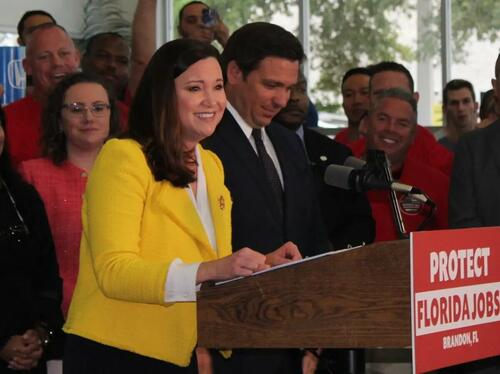 Florida Attorney General Ashley Moody speaks at a press conference in Brandon, Fla. Nov. 18, 2021. (Jann Falkenstern, The Epoch Times)
Florida Attorney General Ashley Moody speaks at a press conference in Brandon, Fla. Nov. 18, 2021. (Jann Falkenstern, The Epoch Times)
“This rule is blatantly unconstitutional. We are suing to defend the Second Amendment rights of all Americans,” Mr. Kobach wrote in a press release on his state website.
In Texas, four states, four Second Amendment Advocacy groups, and one individual are challenging the rule in the U.S. District Court for the Northern District of Texas in Amarillo.
That lawsuit was filed on May 1 by the states of Texas, Mississippi, Louisiana, and Utah, along with Gun Owners of America Inc., the Gun Owners’ Foundation, the Tennessee Firearms Association, the Virginia Citizens Defense League, and Jefferey W. Tormey.
Texas Attorney General Ken Paxton issued a press release calling the new rule an affront to the Constitution.
“Yet again, Joe Biden is weaponizing the federal bureaucracy to rip up the Constitution and destroy our citizens’ Second Amendment rights,” Mr. Paxton’s statement reads.
Gun Owners of America Eric Pratt said allowing the rule to stand would send a dangerous message to other government agencies. In the press release, Mr. Pratt wrote that the rule must be struck down entirely.
“Anything less would further encourage this tyrannical administration to continue weaponizing vague statutes into policies that are meant to further harass and intimidate gun owners and dealers at every turn.”
-
Site: Zero Hedge"An Unlawful Sleight Of Hand": Biden Parole Program Has Flown Illegals To More Than 45 US CitiesTyler Durden Fri, 05/03/2024 - 21:20
In a recent development, a House Committee subpoena has forced the Department of Homeland Security (DHS) to reveal details of its parole program designed to allow entry for thousands of individuals from several nations.
The program, established in October 2022, was initially tailored to facilitate entry for Venezuelans who had American sponsors and passed a vetting process. However, the scope of the program rapidly expanded, encompassing individuals from Cuba, Haiti, and Nicaragua as well - eventually flying illegal aliens to more than 45 cities across the United States.
According to the DHS documents, between January and August 2023, the parole program allowed over 200,000 individuals to enter the United States. While the program did not cover the cost of flights for these individuals, it permitted them to enter the country and make travel arrangements independently. Among the program's participants, Florida emerged as a leading destination, with around 80% of the 200,000 choosing to settle in cities such as Miami, Tampa, and Fort Lauderdale. Other prominent destinations included New York, California, Texas, Nevada, and Georgia.
DHS Secretary Alejandro Mayorkas defended the program, stating that it provided "a safe and orderly way to reach the United States" and asserting, though without presenting specific evidence, that the program "resulted in a reduction in numbers of those nationalities." Mayorkas also highlighted its global relevance, noting its role in addressing "the unprecedented level of migration throughout our hemisphere" and suggesting that other countries might see it as a model to manage irregular migration.
That said, the documents revealed that at least 1.6 million applications were still pending as of October 2023. The program currently admits approximately 30,000 individuals per month, granting them work permits and authorizing them to live in the country for two years.
Congressman Mark Green (R-Tenn.), Chairman of the House Homeland Security Committee, expressed strong criticism of the program, stating, "These documents expose the egregious lengths Secretary Mayorkas will go to ensure inadmissible aliens reach every corner of the country, from Orlando and Atlanta to Las Vegas and San Francisco." Green labeled the parole program "an unlawful sleight of hand" aimed at concealing the worsening border crisis from the American public.
In response to perceived poor handling of the border crisis, Mayorkas faced impeachment by the House of Representatives in February. This marked the second impeachment of a Cabinet secretary in U.S. history, and the first in nearly 150 years. However, the Senate's Democratic majority ultimately voted to end the trial without proceeding to a vote on conviction or acquittal, following repeated delays.
The disclosure of the DHS parole program documents has reignited debate over U.S. immigration policy and the handling of migration at the southern border, reflecting persistent tensions on these issues at both the national and international levels.
-
Site: Zero HedgeTrump Urges Dismissal Of Mar-a-Lago Case, Claims 'Selective And Vindictive Prosecution'Tyler Durden Fri, 05/03/2024 - 21:00
Authored by Caden Pearson via The Epoch Times (emphasis ours),
Former President Donald Trump docketed a brief to support his motion to dismiss the classified documents indictment against him in Florida, citing “selective and vindictive prosecution” on Thursday.
 Former President Donald Trump speaks to the media in Palm Beach, Fla., on March 19, 2024. (Joe Raedle/Getty Images)
Former President Donald Trump speaks to the media in Palm Beach, Fla., on March 19, 2024. (Joe Raedle/Getty Images)
The 43-page filing contends that special counsel Jack Smith’s case against the former president “has been motivated by improper political animus.”
It cites “targeted leaks and public statements” by President Joe Biden, “urging others to prosecute President Trump.” This refers to a New York Times report from April 2, 2022, reporting that President Biden told his “inner circle that he believed former President Donald J. Trump was a threat to democracy and should be prosecuted.”
President Trump’s lawyers contend that the article amounted to presidential pressure on Attorney General Merrick Garland to “act ... more like a prosecutor who is willing to take decisive action.”
The motion details a series of events to support the former president’s arguments of a concerted effort by the Biden administration and federal agencies to target him.
It points to statements from officials at the National Archives and Records Administration (NARA), which is responsible for the preservation of presidential records, that the Biden administration’s “current business” was investigating the 45th president. Among other events, it cites a text message from a NARA official dated Feb. 9, 2022, stating that the classified documents have “consumed all of our discussions” with the Biden White House.
“There is evidence of vindictive political animosity focused on election interference in these proceedings, which is part of the reason why the Special Counsel’s Office is wrong in the claim that President Trump ‘does not contend that the Special Counsel himself was motivated by improper considerations,’” President Trump’s lawyers argue.
Smith Refutes Trump’s Claims
In a March 7 filing, Mr. Smith argues against President Trump’s claims that the prosecution team, influenced by political bias, is selectively targeting him for prosecution.
Prosecutors from the special counsel’s office argue that the former president hadn’t identified anyone in his motion who was engaging in similar conduct without being prosecuted and failed to provide evidence that his indictment was solely retaliatory.
“Trump contends ... that he has been subject to selective and vindictive prosecution,” the prosecution wrote. “But he has not identified anyone who has engaged in a remotely similar battery of criminal conduct and not been prosecuted as a result.
“He has likewise failed to provide any evidence that his indictment was brought solely to retaliate against him for exercising his legal rights, rather than because he flagrantly and repeatedly broke the law,” the prosecution continued.
Meanwhile, President Trump’s legal team has given Judge Aileen Cannon, a Trump appointee, a list of other former government officials who they say engaged in similar alleged misconduct, including the mishandling of classified information.
Among them are President Biden, former Vice President Mike Pence, former Secretary of State Hilary Clinton, former President Bill Clinton, and the FBI’s former director James Comey.
However, with respect to the alleged misconduct of these officials, President Trump’s team asserted in a February motion that “no one in the government lifted a finger” to prosecute them.
“Collectively, this history of non-prosecution and leniency for similarly situated individuals and others strongly supports President Trump’s motion based on intolerable and unconstitutional selective and vindictive prosecution,” the motion reads.
President Trump’s lawyers argued again on Thursday that, on its face, these specific comparators are enough to establish a case of selective and vindictive prosecution.
The former president’s legal team asked the judge for further investigation through discovery and a hearing to examine the allegations of selective prosecution.
Trump ‘The Exception’
Special counsel Robert Hurr declined to press charges against President Biden in February, despite finding evidence that he retained and disclosed highly classified materials when he was a private citizen.
According to Mr. Hur’s report from February, there is no precedent for prosecuting former presidents or vice presidents for mishandling classified documents from their own administrations, with one exception.
“The exception is President Trump,” the February motion reads.
“The basis is his politics and status as President Biden’s chief political rival,” the motion continues. “Thus, this case reflects the type of selective and vindictive prosecution that cannot be tolerated. Accordingly, further discovery and a hearing are necessary, and the Superseding Indictment must be dismissed.”
President Trump’s legal team cited Mr. Hur’s report in a bid to exonerate him from charges. On the other hand, the prosecution claims that the former president was the only one who participated in a “multifaceted scheme of deception and obstruction” to prevent the safe return of those documents.
The former president argues that the special counsel’s office is trying to influence the general election by pursuing “two lawless prosecutions,” which have been initiated at the urging of the Biden administration.
“[T]he Special Counsel’s Office seeks to ‘become a de facto campaign voice for the Democrats in the general election,’ and Jack Smith is ‘probably less concerned now with whether a Trump conviction will survive appeal than with whether Trump can be convicted ahead of the November 2024 election,’” the February motions reads.
“No sitting President has ever successfully pressed for the prosecution of a former President, and his chief political rival, the way that President Biden did—proudly and publicly—in 2022,” President Trump’s lawyers contend. “NARA has never targeted a former President in the way that the agency targeted President Trump. No law enforcement body has ever raided a former President’s home. DOJ has never even used civil remedies against a former President.”
President Trump’s defense had previously sought to have the case thrown out based on the Presidential Records Act (PRA), but Judge Cannon rejected this argument on April 4.
Mr. Smith had indicted President Trump and aide Walt Nauta in June 2023, alleging mishandling of over 300 classified documents. The charges against the former president include 31 counts of violating the Espionage Act, along with various other counts related to obstruction of justice, withholding documents, and making false statements.
The Epoch Times contacted Mr. Smith’s office for comment.
-
Site: Zero HedgeStormy Daniels Lawyer Says Payment Wasn't 'Hush Money' - Avenatti Calls "A Shakedown"Tyler Durden Fri, 05/03/2024 - 20:40
A lawyer who was involved in negotiations between former President Donald Trump and two women denied that payments made to them constituted "hush-money," and instead used the word "consideration."
Keith Davidson, who negotiated deals with both Stephanie Clifford (aka Stormy Daniels) and model Karen McDougal, disputed Manhattan prosecutor Joshua Steinglass's language during a May 2 court appearance.
"It wasn’t a ‘payout’ and it wasn’t ‘hush money.’ It was consideration in a civil settlement," said Davidson.
"Would you use the phrase hush money to describe the money that was paid to your client by Donald Trump?" Steinglass shot back.
"I would never use that word," Davidson replied.
When asked what he would call it, he said it was a "Consideration," comparing it to a contract in which one pays to have one's lawn mowed.
Trump attorney Emil Bove pressed Mr. Davidson on his understanding of extortion law, grilling him about previous instances in which he solicited money to suppress embarrassing stories, including one involving wrestler Hulk Hogan.
Mr. Bove suggested to the witness that by the time he negotiated the payments for Ms. McDougal and Ms. Clifford, he would have been “pretty well versed in coming right up to the line without committing extortion.”
“I had familiarized myself with the law,” Mr. Davison replied. -Epoch Times
Davidson also told Steinglass that he worked out the "consideration" deal with former Trump attorney Michael Cohen just days before the 2016 election, but that Trump never signed it.
Avenatti pipes up from prison
Trying to reclaim his 15 minutes of fame from prison, former Trump foe and Stormy Daniels' ex-attorney Michael Avenatti posted on X that Davidson is a liar - and had in fact tried to extort Trump.
"Keith Davidson is lying," claimed Avenatti. "After I confronted her w/ her own text msgs, Daniels admitted to me in early 2019 that she & Davidson had extorted Trump in Oct. 2016 – it was a shakedown."
Keith Davidson is lying. After I confronted her w/ her own text msgs, Daniels admitted to me in early 2019 that she & Davidson had extorted Trump in Oct. 2016 - it was a shakedown. This was one of the many reasons I fired her as a client in Feb. 2019
— Michael Avenatti (@MichaelAvenatti) May 2, 2024Last month, Trump publicly thanked Avenatti "for revealing the truth about two sleaze bags who have, with their lies and misrepresentations, cost our Country dearly!," referring to the gag orders placed on Trump in his Manhattan trial.
-
Site: ABYSSUS ABYSSUM INVOCAT / DEEP CALLS TO DEEP
Jean-Francois Orsini
 Apr 22, 2024, 2:16 PM (11 days ago)to me
Apr 22, 2024, 2:16 PM (11 days ago)to me
Dear Excellency,I am all set up to sell the use of my AlexTest of personality based on the Cardinal Virtues.But backtracking one step, I realized the need to promote first that the Cardinal Virtues are the best elements for a theory of personality… from there then the proposition of a test based on the Cardinal Virtues should be readily accepted.I must add that it took me time and money but I had the test statistically validated and proven reliable. That validation makes certain to all – and in particular to the materialistic world – that the test is “Scientific”.I am very happy to introduce the theory and the test in the very unChristian world of the “Human Resources”. This worldly world by many means introduces the regular person as a future and actual employee to the world of work without any spiritual basis. (although I have to defend the point that good Cardinal Virtues do not make a saint.. but would certainly help to rise to the state of grace for Christians).Maybe some of your readers might be interested. I am grateful for any help in this matter.God blessJean-Francois
2 Attachments • Scanned by Gmail
Advocating for a Cardinal Virtues Theory of Personality
Jean-Francois Orsini, Ph.D.
The significance of centralizing the Cardinal Virtues within a Theory of Personality cannot be overstated. Our initial reference point will be the Wikipedia article on Personality. It is imperative to acknowledge that Wikipedia pages exhibit a distinct secular bias; however, they do effectively articulate the perspectives of worldly intellectuals on any given subject.
The Wikipedia article on Personality acknowledges the absence of a consensus definition for personality. Nonetheless, insight into various personality theories can be gleaned by examining the specific psychological variables these theories address. The article enumerates several tests, including the Minnesota Multiphase Personality Inventory (MMPI-2), the Rorschach Inkblot test, the Neurotic Personality Questionnaire KON-2006, and Eysenck’s Personality Questionnaire (EPQ-R), all designed to study abnormal psychology in patients. Eysenck’s test also assesses temperament, a stable trait distinct from personality. However, these tests fail to illuminate the construct of a healthy, serene personality, which lies at the core of an inquiry into a theory of personality.
It is notable that the Myers-Briggs test, despite its popularity, is absent from this list. This omission raises the question of whether the listed tests are esteemed for their reliability and validity, attributes which the Myers-Briggs test may lack due to its origins in informal observation by its creators, Myers and Briggs, who lacked formal training in psychology.
The article also references the Big Five Inventory (BFI), which incorporates some virtues, warranting closer examination. The development of the Big Five test involved analyzing the relationships among numerous personality-related words, employing factor analysis to distill these words into five categories. This method prioritized statistical efficacy over reasoned selection of personality traits, akin to a sleight of hand that circumvented rigorous conceptual deliberation.
The resulting five groups are: Openness to Experience, Conscientiousness, Extraversion, Agreeableness, and Neuroticism. While Neuroticism pertains to mental health issues best addressed at the physiological level, Extraversion represents a temperament inherent from birth. Discriminating based on temperament in employment contexts would be unjust and diminish organizational diversity, although such information may be valuable for coaches and mentors.
Conscientiousness encompasses a spectrum of virtues, including fairness, perseverance, foresight, understanding, circumspection, and firmness of resolve. Similarly, Openness to Experience embodies virtues such as affability, docility, sagacity, gratitude, liberality (non-politically construed), reasoning, magnificence, and audacity. Agreeableness is niceness/meekness, gratitude, and fairness. These fifteen intertwined virtues within the Big Five framework render the retained three to lack precision and comprehensiveness, falling short of a robust theory of personality, which ideally encompasses at least thirty virtues or traits.
According to Aristotelian philosophy, virtues are stable habits cultivated through confronting life’s challenges, whether pleasurable or painful. Developing virtuous habits demands effort, such as cultivating courage in the face of danger, justice in the midst of personal interest, good judgment in decision-making, and temperance in self-restraint.
It is important to emphasize that a virtue theory of personality is not inherently tied to any doctrinal bias. The Cardinal Virtues, originating from ancient Greek philosophy, transcend specific religious doctrines and find promotion across diverse belief systems, ranging from the Catholic Church to the Freemasons. Hence, it is ideally suited for widespread adoption.
Employees who actively cultivate virtuous habits demonstrate self-engagement and a commitment to personal growth, fostering a readiness to engage meaningfully in their work. Therefore, virtues, particularly the Cardinal Virtues, warrant inclusion in a theory of personality. Psychologists should strive to deepen their understanding of virtues and embrace a virtue-based approach to personality theory.
“Personality might be defined as the sum total of all of rational habits grouped around the axis of intellect” (Brennan Robert Edward, OP, Thomistic Psychology, 1941).
-
Site: Zero HedgeMoney Is A Monopoly Government Will Never SurrenderTyler Durden Fri, 05/03/2024 - 20:20
Authored by Jeffrey Tucker via The Epoch Times,
A major intellectual revelation from my youth came from reading Murray Rothbard’s “What Has Government Done to Our Money?” (1963). He includes a passing opinion that private markets are perfectly capable of producing money with no help from government. Under a sweeping monetary reform, private mints could compete in offering this good with full associated services. There is no need for any government intervention here.
It was the kind of claim that, at some point in one’s life, causes the jaw to hit the floor. Investigating this assertion more, I came to see that there was a large literature on the topic. Historically, money originated in the market economy itself, a naturally evolving institution that met the needs of trade. Whatever good was generally valued by everyone, and was as capable of being divided into consistent units with a stable value, could be deployed as money, with no need for government to do anything but watch.
But of course history has not panned out that way. Every government has a strong incentive to monopolize the good called money because this is how they can tax their citizens, reward the most compliant industries, cultivate close relationships with bankers, and inflate the currency at will through a variety of methods depending on the technology of the time.
We can of course imagine primitive tribes or pre-colonial native populations using rocks and shells, but is there a modern case where private coinage became normalized? In a major but often overlooked work of historical scholarship, economist George Selgin has written the most extensive treatment of the private coinage industry in the UK at the dawn of the Industrial Revolution.
His book “Good Money” is beautifully produced with color photographs of some of the most alluring coins you will ever see. The historical narrative is endlessly fascinating. At the dawn of the factory system, the Royal Mint didn’t care in the slightest bit about small denomination coins of silver and copper to enable small businessmen to pay their workers. The Royal Mint only produced large denominations in gold for big business doing big trade deals.
Frustrated with the inability to pay workers, the entire period from 1700 through 1813 saw the evolution of a sophisticated industry focused on coinage. Old button factories were converted to producing coins of various weights and sizes based on copper and silver. They were used to pay workers and accepted widely by merchants.
The system worked just fine and it could have continued forever. The new industry alleviated the coin shortage and yielded healthy competition among many producers of new money. It was all made to be inflation resistant and verifiable according to standard weights and measures. This was a full industry of private coinage, in operation in one of the most advanced and industrious societies in the world at the time.
Sadly, the Royal Mint eventually became upset about this. Driven by the eternal need of government to control the money in its realm, Parliament passed a series of acts in 1812–1813 to cartelize the function of the mint and make the Royal Mint the only legal producer. The entire industry was destroyed very quickly. So from this one case, we can see that the monopolization of money is not an outgrowth of market forces but imposed by government. It has always been this way.
The digital age birthed new attempts to privatize money, stemming from a very real problem of financial verification (revealed in the 2008 financial crisis) and using money without the need for intermediaries. The result was Bitcoin, which was born in January 2010. It grew in sophistication and value over the course of the year. In the following seven years, adoption exploded and incentivized the creation of new private methods of settling transactions and accepting credit cards. It was a solid competitor to nationalized money.
As in 1813, governments did not much like it. The code of Bitcoin itself was deliberately throttled to prevent the new private money from scaling, prompting a fork in the transaction chain and the birth of general chaos in the industry, even as Bitcoin itself kept growing in value. Government responded by taking control of the on-ramps, the off-ramps, all exchanges, and then put heavy taxation and reporting requirements on all dealings. Right now, the crackdown is full-on, with websites and wallets being shut down and top investors investigated and even subject to criminal trials.
As in 19th century Britain, we see here another tragic case of government intervention strangling a wonderful new industry in the interest of maintaining a monopoly on power, the first condition of which is always to control the money of the realm.
I think back to my own shock at the discovery that free enterprise was fully capable of managing money as a good. It had never occurred to me because it had always been otherwise. And yet, if you think about it, there are all sorts of conditions in which market forces invent money as a method of moving beyond primitive barter arrangements.
Every prison has its own form of money. It used to be cigarettes but now is more commonly canned fish or some other valued good. The only reason this is not common in society at large is that governments do not want it this way.
A feature of government management in modern times has been periodic reforms that always end in making the system worse. We had a government-backed gold standard in the late 19th century that was compromised by a fixed price relationship between gold and silver that was unsustainable. Then we got the Federal Reserve in 1913, with the promise that it would control inflation even as it took off soon after the Fed accommodated the need for war funding.
In 1933, we got another reform that devalued the currency from the center, changing the definition of a dollar from 1/20 an ounce of gold to 1/35 an ounce. That massive devaluation was accompanied by a nationwide gold confiscation that included criminal penalties and jail time for noncompliance. At the close of World War II, a new system called Bretton Woods forbid domestic conversion and only allowed gold for international exchange. This was completely unsustainable because every nation has different fiscal and monetary policies so of course the value of money could not be frozen in place. This led to the end of the gold standard completely in 1971–73, resulting in a disastrous inflation bout.
No question that the next great monetary reform will be to globalize a central bank digital currency with track-and-trace capability and the power to turn money on and off on political whim. In order to make this possible, government now needs to eliminate all the competition, just as they did in 1813.
None of this mucking around with the money is in the public interest. It is in the government’s interest and also its industrial partners in banking and finance. A full denationalization of money is the fix for the whole problem but getting there from here will require dislodging the government of its penchant for controlling the economic forces of the whole realm. It’s an age-old problem and perhaps the greatest challenge of all ages.
-
Site: non veni pacem
 Billboard at one of the Philly bridges last June
Billboard at one of the Philly bridges last June
Ad Majorem Dei Gloriam!
“June is traditionally the Month of the Sacred Heart, a devotion which has unfortunately been lost in recent years. In order to increase awareness of this beautiful devotion, The Wynnewood Institute is sponsoring billboards along major roadways in NY, NJ, PA, DE, MD and DC. We do this along with the support of America Needs Fatima. Not only is this a blessing and grace for our society in such chaotic times but it is a way for us to publicly honor, love and make reparation to the Sacred Heart of Jesus and the Immaculate Heart of Mary. Any donation will help make an impact. Donations can also be made directly at the Wynnewood Institute website. Thank you in advance for your contribution to this cause. All proceeds go to the cost of these billboards. Viva Cristo Rey!”
PLEASE CLICK HERE TO HELP OUT
-
Site: Zero HedgeCalifornia's Single-Family Zoning Exemplifies The Market-Intervention ProblemTyler Durden Fri, 05/03/2024 - 20:00
California’s government bet that they knew better than the free market. And now millions are paying the price...
The story begins in 1919, when the city of Berkley, California instituted legislation setting aside districts that would only allow the construction of single-family housing. The idea spread, and soon much of California’s urban areas had adopted the zoning policy. Today, approximately 40% of the total land in Los Angeles is set aside for single-family homes, while only 11% is reserved for multi-family residences.
In 2021, a bill was signed which was intended to end single-family zoning in California. But politics is rarely that simple. The decision was met with widespread protests and an LA County Court recently declared the law unconstitutional, preventing its passing in 5 Southern California cities. While many celebrated the ruling, the decision has perpetuated California’s housing crisis.
The logic behind the original legislation was to preserve the “charm” of California’s neighborhoods. In the eyes of policymakers, multi-family residences such as apartment complexes or duplexes would sully the white-picket fence aesthetic which they saw as a staple of Californian life. While this may appear like a harmless notion, this idealism came with devastating consequences.
The problem with this policy is apparent to those with an understanding of supply and demand. By preventing high-capacity residences from being built, the supply of housing has been artificially constrained by the legislation. Even as demand rises for increased housing, companies cannot produce the necessary residences to meet the desire. When demand rises while supply remains fixed, prices will surge. And that’s exactly what happened.
California has the second highest home prices of any state, behind only Hawaii. Housing costs have increased by 10.1% in the past year, while the number of homes sold has decreased by 6.9%. As of March 2024, the average price of a house in LA is a staggering $974,000. In San Francisco, that figure is 1.29 million.
These soaring rates have heavily affected the citizenry. California has the 4th highest homelessness per capita rate among U.S. states. Over 180,000 Californians are homeless, which is almost a third of the nation’s entire homeless population.
While the cause of some homelessness is self-inflicted, studies have found a direct correlation between the cost of housing and rates of homelessness. With the second-highest housing costs of any state, it’s safe to say daunting housing prices are at least partially to blame for a vast number of California’s displaced citizens.
Another consequence of the legislation is an increase in class inequality. California has the fourth-most unequal income distribution of any state. The zoning law contributes to this problem by acting as a gatekeeper that excludes low-income families from better neighborhoods, sacrificing equality for community “quality.” Accompanied by the state’s stringent school choice laws, many citizens are left attending lower-caliber schools in worse neighborhoods. This harms future career opportunities and feeds the vicious generational cycle of poverty.
These issues are all either caused or exacerbated by the single-family zoning legislation which has constrained the state’s housing market for decades. The directive prevents the construction of apartment complexes, or other housing structures which would cater to a larger constituency, keeping prices too high for many to afford. From 1919 to the present, politicians have continued to turn a blind eye to single-family zoning’s detrimental effects in the pursuit of the perceived good of protecting neighborhoods.
The Fundamental Problem with Government Intervention
Government intervention always leads to unintended consequences. It’s a tale as old as government. But why does it so often result in disaster?
There’s a fatal flaw at the root of all bureaucratic intervention: a lack of information. In any centralized decision, there is an incalculable amount of pertinent decentralized information that is not available to governmental bodies.
In the absence of intervention, this information is communicated through prices. Even though all of the information will never be understood by the same person at once, we’re still able to coordinate our plans to reach a productive end. That’s the beauty of the price system. You may have no idea that a cocoa farm in Ghana had a poor yield, but you will buy less cocoa when it costs more than usual. A series of complex events can all be boiled down to a simple price hike.
Government intervention is the wrench in the works. No centralized body can know all of the variables in a given situation. While protecting Californian neighborhoods sounds good, it is a gross simplification of the actual issues at play. Restricting the supply of housing leads to a bevy of consequences, including skyrocketing prices, rampant homelessness, and pervasive inequality. The pursuit of a solution in the absence of information usually ends up hurting more people than it helps.
Economics is often regarded as a dismal science reserved for bookworms and professors. But for the homeless who are struggling to survive because of market-hampering governmental policies, economics is about life and death. When the government intervenes in the market system because it “knows best,” it far too often doesn’t, and innocent people pay the price. It’s up to us to hold our leaders accountable for the consequences of their actions and to help those harmed by their political arrogance.
-
Site: Zero HedgeMajor Australian Pension Fund To Restrict Coal InvestmentsTyler Durden Fri, 05/03/2024 - 19:40
By Tsvetana Paraskova of OilPrice.com
Australian Retirement Trust, which manages $183 billion (AUS$280 billion) of retirement savings, is placing thermal coal on its exclusion list as of July 1, as it looks to have a net-zero emissions portfolio by 2050.
Thermal coal includes the mining of lignite, bituminous, anthracite, and steam coal and its sale to external parties, the second-largest Australian pension fund said in updates to its product offering.
The fund will be screening its investments and exclude direct investments in coal companies that have 10% of revenue from coal (estimated or reported) in the most recent year of financial reporting.
“As a global investor, Australian Retirement Trust is committed to achieving a net zero greenhouse gas emissions investment portfolio by 2050,” the fund said in a statement carried by Reuters.
However, it applies exclusions in limited circumstances “in accordance with members’ best financial interest.”
For coal investments, exclusions will apply for pooled derivative products, which may have indirect exposure to companies involved in the mining of thermal coal. Exclusions will also be made for companies deriving revenue from metallurgical coal used in the production of steel, coal mined for internal power generation, intra-company sales of mined thermal coal, revenue from coal trading, and royalty income for companies not involved in thermal coal extraction operations.
Climate change is the single largest motivation of investment institutions to decide to exclude companies from their portfolios, a so-called ‘exclusion tracker’ showed last year.
Investors have become increasingly wary of investing in ‘sin industries’, which for many now include fossil fuel companies alongside the weapons and tobacco sectors.
Pension funds and other institutional investors in Europe have already excluded some major oil and gas companies from their portfolios, while some European banks have scaled back financing for fossil fuel projects.
Not all investors are dumping fossil fuels—some believe that owning stocks could help them influence decisions at oil and gas firms regarding emissions reductions.
-
Site: Zero HedgeBiden Admin Covertly Pursued Gender Affirming Care For Kids In States Where The Practice Is BannedTyler Durden Fri, 05/03/2024 - 19:20
America First Legal revealed documents on Thursday from its lawsuit against the U.S. Department of Health and Human Services (HHS), showcasing emails from Assistant Secretary for Health Rachel Levine and indicating that the Biden Administration has engaged privately with "gender affirming care providers" from states that have outlawed these practices, pledging federal support to counteract such state laws.
In particular, Levine expressed significant concern for the LGBTI+ community in Idaho, emphasizing ongoing efforts to challenge these state measures nationally, the site pointed out. The documents were acquired through a Freedom of Information Act (FOIA) request concerning Levine’s correspondence about pediatric transgender clinics.
Previously, in March 2023, Levine stated that the federal backing for transitioning children was comprehensive, even at presidential levels, and framed any opposition as politically motivated. The newly revealed records elaborate on the administration's covert operations with advocates to push this agenda.
THERE IT IS.
— Kyle Becker (@kylenabecker) May 2, 2024
America First Legal (@America1stLegal) has uncovered documents proving the Biden administration coordinated with radical activists to find ways around state laws to g*oom children to become "transgend*r."
"New internal docs obtained through our lawsuit against HHS… pic.twitter.com/UOfhiskOsEOne notable communication from June 2022 involves HHS Regional Director Ingrid Ulrey discussing an Idaho meeting about impending legislation aimed at prohibiting certain medical treatments for minors. Ulrey's message to Levine highlighted her empathy for Idaho's LGBTQ community, particularly in light of legislative efforts she described as harmful.
Among other things, the report noted that in her memo, Ulrey highlighted concerns about the impact of Idaho's proposed law on "Gender Affirming Care" (GAC), including a doctor shortage and the high costs of such treatments without insurance subsidies.
She noted that only one provider was offering GAC to a significant state prison population, with a few others too intimidated to attend a meeting or preferring to stay under the radar. Ulrey also relayed that the care providers had specific definitions of GAC, controversially suggesting the removal of parental consent requirements, which could include requiring consent from just one parent or both if divorced. This approach appears to be advocated by a high-ranking HHS official following discussions with these providers.
Ulrey's discussions with "gender-affirming care providers" led to a disturbing proposal to simplify legal barriers, including reducing parental consent requirements for such treatments, according to America First Legal.
Following these meetings, a high-ranking HHS official advocated for the removal of parental consent as part of the definition of "gender-affirming care."
The meeting's summary called for federal intervention to override state laws restricting such care, with suggestions for using Medicaid to mandate coverage across all states and queries about providing such care in prisons, indicating a push to extend "gender-affirming care" despite local restrictions.
The summary also reflected provider concerns about parental rights obstructing children's access to these treatments. On June 5, 2022, Assistant Secretary Levine expressed ongoing support for the LGBTI+ community in Idaho, promising to continue advocacy efforts nationally.
Further details emerged from a June 2022 roundtable in Anchorage, Alaska, where discussions focused on integrating mental health counselors in schools amidst concerns about parental opposition. A local clinic, Identity, Inc., was noted for providing non-surgical gender-affirming care, with surgical treatments sought outside Alaska. The report also mentioned potential local legislation in Anchorage impacting transgender individuals' participation in school sports, signaling continued legislative challenges for the transgender community.
America First Legal Senior Advisor Ian Prior commented: “The Biden Administration is leveraging the full power of the federal government to engage in an anti-science war on reality, with America’s children as the collateral damage. While European nations are drastically pulling back on these dangerous experiments and a number of states are legislating against them, the Biden Administration is plowing full steam ahead in its goal of redefining the foundations of biology, from the doctors’ offices to the athletic fields. This comes even as the United States Supreme Court has held that states have a right to enact such legislation. The Biden Administration is supporting crimes against humanity, and America First Legal will continue to fight back until these dangerous practices end.”
You can read the full trove of emails here.
-
Site: The Remnant Newspaper
-
Site: Zero HedgeFord's $120,000 Loss Per Vehicle Shows California EV Goals Are ImpossibleTyler Durden Fri, 05/03/2024 - 18:20
Authored by John Seiler via The Epoch Times (emphasis ours),
So much for California’s mandate that “all new passenger cars, trucks, and SUVs sold in California will be zero-emission vehicles by 2035,” according to the California Air Resources Board. It imposed the mandate at the request of Gov. Gavin Newsom.
 The all-electric F-150 Lightning from Ford is displayed at the Los Angeles Auto Show in Los Angeles on Nov. 18, 2021. (Frederic J. Brown/AFP via Getty Images)
The all-electric F-150 Lightning from Ford is displayed at the Los Angeles Auto Show in Los Angeles on Nov. 18, 2021. (Frederic J. Brown/AFP via Getty Images)
On April 24, Ford reported it lost $132,000 for each of its 10,000 electric vehicles sold in the first quarter of 2024, according to CNN. The sales were down 20 percent from the first quarter of 2023 and would “drag down earnings for the company overall.”
The losses include “hundreds of millions being spent on research and development of the next generation of EVs for Ford. Those investments are years away from paying off.” Ford is the only major carmaker breaking out EV numbers by themselves. But other marques likely suffer similar losses.
Californians bought 1.78 million new vehicles in 2023, reported the California New Car Dealers Association. Multiply that number by $132,000 and you get $235 billion. That would bankrupt every car manufacturer, meaning they just would pull out of selling anything in the state.
The California government would have to set up socialist, government-owned companies to make the cars, like the infamous Yugo. Dubbed “the worst car in history,” it was sold in America in the 1980s and was made by the communist Yugoslav government just before the country itself broke up in 1991.
 A man works on one of the last Yugos at Serbia's Zastava car plant on the production line in Kragujevac on Nov. 9, 2008. The car became popular in the local market due to its low price and fuel consumption. (Aleksandar Stankovic/AFP via Getty Images)
A man works on one of the last Yugos at Serbia's Zastava car plant on the production line in Kragujevac on Nov. 9, 2008. The car became popular in the local market due to its low price and fuel consumption. (Aleksandar Stankovic/AFP via Getty Images)
Battery Problems
The Epoch Times also reported that same day, April 24, “Ford Recalling More Than 55,000 SUVs and Trucks in Canada Over Battery Issues.” The Transport Canada notice read, “A sudden loss of power to the wheels or a vehicle that doesn’t restart after a start-stop event could increase the risk of a crash. Additionally, hazard lamps that don’t work could make the vehicle less visible and increase the risk of a crash.”
Also, most of Canada gets really cold in the winter. “The effects of cold weather on car batteries start to become pronounced when the temperature drops below freezing for an extended period,” explained United Tire & Service. “At a temperature of 32 degrees Fahrenheit, your battery will lose about 30 percent of its power. Your battery will continue to get weaker as the temperatures get colder. In fact, your battery will lose about 60 percent of its power at 0 degrees Fahrenheit.”
In Montreal, the average low temperature in January is 10 degrees Fahrenheit. In Edmonton it’s 8 degrees.
Most of California enjoys the balmiest weather on earth. But in January 2023, the temperature around Bridgeport, near Yosemite National Park, dropped to minus 27 degrees. In such areas, EVs are almost completely useless except for rich people in the summer.
Cheap Electric Cars?
But isn’t Tesla working on cheaper models, not just the expensive ones? Aren’t they figuring out what Ford couldn’t? “Exclusive: Tesla scraps low-cost car plans amid fierce Chinese EV competition,” headlined Reuters on April 5.
However, on April 24 Yahoo Finance headlined, “Tesla stock surges as EV maker will ‘accelerate’ the launch of cheaper cars. Tesla had previously said it would focus on its robotaxi product after paring back plans for a lower-cost car.”
Who knows what’s going on with mercurial Tesla CEO Elon Musk? But I would never count him out.
So what about those cheap cars financed by communist China? In February, the Biden administration announced it would investigate Chinese “smart” cars, which like your cell phone—probably also made in China—scoop up increasing amounts of data about your life.
“China is determined to dominate the future of the auto market, including by using unfair practices,’' President Joe Biden said. “China’s policies could flood our market with its vehicles, posing risks to our national security. I’m not going to let that happen on my watch.’’
On April 11, Sen. Sherrod Brown (D-Ohio) called for banning Chinese EVs as “an existential threat to the American auto industry. Ohio knows all too well how China illegally subsidizes its companies, putting our workers out of jobs and undermining entire industries, from steel to solar manufacturing. We cannot allow China to bring its government-backed cheating to the American auto industry.”
So far no action has been taken. But presumptive Republican nominee Donald Trump in March promised he would impose a 100 percent tariff on Chinese cars, EV or otherwise, built in Mexico.
No CO2 Threat
Meanwhile, the carbon monoxide emitted by gas and diesel engines is being shown not to cause global warming. Reported No Tricks Zone, “Three Polish physicists have focused their attention on this saturation principle as it applies to CO2 in three recently published papers (Kubicki et al., 2024, 2022, and 2020). Their latest (Kubicki et al., 2024), published in Applications in Engineering Science, summarizes the experimental evidence from their 2020 and 2022 publications substantiating the conclusion that ‘as a result of saturation processes, emitted CO2 does not directly cause an increase in global temperature.’
“The authors are concerned about the recent push to rely on modeling and assumptions about CO2’s capacity to drive changes in global temperature rather than observational evidence. They point out the current CO2-is-the-climate-control-knob zeitgeist is no more than a hypothesis.”
The scientists themselves wrote: “This unequivocally suggests that the officially presented impact of anthropogenic CO2 increase on Earth’s climate is merely a hypothesis rather than a substantiated fact.”
As I have written several times in The Epoch Times, the CO2 from California vehicles is minuscule compared to the massive spewing from coal plants still being built in massive numbers in communist China. See from March 25, “‘Green Innovation’ Study Shows California CO2 Policies Mainly Help China.”
Conclusion: EV Mandates Are a Delusion
California’s 100 percent zero-emission vehicle mandate by 2035 is a tailpipe dream. It’s pushed by ambitious politicians like Mr. Newsom and financed by billionaire environmentalists like Bill Gates. It has no basis in reality.
At some point in a couple of years, a coalition will form to get rid of these mandates, as well as President Biden’s national goal of more than half of all vehicles sold being EVs by 2030. Auto dealers, especially in California, will work with automakers and the Democratic-aligned United Auto Workers union to push the mandates further into the future, say 2045. Later, the date will be pushed to 2055, and so on.
Mr. Newsom’s term as governor ends in January 2027. President Biden, if reelected, must leave in January 2029. California’s term limits also mandate a maximum of 12 years in the Legislature.
Today’s politicians will be gone soon enough, their green battery dreams wafted away like the thick exhaust from a classic 1957 Chevy.
Views expressed in this article are opinions of the author and do not necessarily reflect the views of The Epoch Times or ZeroHedge.
-
Site: LifeNews
A physician who faced the specter of losing his license over his helping women try to save their unborn children exhorted pregnancy help professionals at the 2024 Heartbeat International Annual Conference to stay the course in doing the right thing when it come to standing for life.
“Never, ever get tired of doing what is right,” Dr. Dermot Kearney said. “It can be discouraging. There will be opposition. Sometimes you’ll fall and fail, but just get back up and never, ever get tired of doing what is right.”
Kearney, a cardiologist practicing in northeast England and president emeritus of the Catholic Medical Association (UK), addressed the Heartbeat Conference held in Salt Lake City, Utah, April 24-26.
Kearney was blocked by the UK medical authorities from providing Abortion Pill Reversal (APR) treatment and faced false charges of misconduct. Kearney withstood the suppression and eventually prevailed, as there was no evidence for the claims against him. Following this, another colleague in the UK who’d faced similar repression was also allowed to resume offering APR.
Click here to sign up for pro-life news alerts from LifeNews.com
Heartbeat is the largest network of pregnancy help in the U.S. and globally and manages the Abortion Pill Rescue® Network (APRN). Kearney was administering APR through the APRN.
Despite facing tremendous opposition of his own, Kearney said he and other UK providers have saved at least 61 babies so far—with more on the way—since 2020, when he began administering abortion pill reversal, the proven progesterone treatment to counteract mifepristone, the first abortion pill.
“I’ve been practicing medicine since 1989 and in those 35 years I’ve done various things in cardiology and general medicine and emergency medicine,” he said as photos of him with babies he’s saved covered the big screens beside him. “But this far and away is the most rewarding aspect of medical practice that I can obviously say that I’ve enjoyed.”
Kearney reported at least a 50% success rate (i.e., continued pregnancy and live birth) for his own patients who receive progesterone after taking only mifepristone. He compared this to a 1-2% survival rate when women take both mifepristone and misoprostol (the second pill in the abortion regimen), and a below-20% survival rate if women take only mifepristone but do not receive progesterone.
“On the basis of the data that we have managed to collect, if they go ahead with the abortion rescue treatment, we can more than double the rate of survival of the babies,” Kearney said. “I have found that if we can get to 15 weeks there’s a very good chance that their baby will be okay.”
(In the U.S., success rates tend to be closer to 64-68%, he noted, due in part to easier ultrasound access.)
On the occasions when he was unable to restore a pregnancy, he drew encouragement from his colleague Dr. Eileen Reilly, the first UK doctor to attempt abortion pill reversal, who reminded him, “Even if you save one life, it’s all worthwhile.”
Opposition to saving lives
Kearney’s success in saving lives, however, drew fire from the UK medical establishment.
Before implementing the protocol himself in 2020, Kearney had approached the National Health Service, the Royal College of Obstetricians and Gynaecologists, and the Royal College of General Practitioners, hoping they would get behind this life-saving treatment, given the accumulating evidence of its effectiveness. They did not.
Instead, unbeknownst to him, an investigation by the General Medical Council, UK’s medical licensing authority, began in January 2021 after the Royal College of Obstetricians and Gynaecologists, along with the pro-abortion organization Marie Stopes International, accused him of professional misconduct. In all, 10 allegations and charges were brought against him.
On May 12, 2021, Dr. Kearney was taken before the medical tribunal and there prohibited from prescribing, administering, or recommending progesterone for Abortion Pill Reversal treatments—a step back from the General Medical Council’s call to completely suspend his license.
“The result is that I’m the first doctor in history, I think, to be banned from saving lives,” he said.
Ironically, on May 11, just one day before this decision, another baby he had saved with progesterone was born.
A legal team from Christian Concern’s Christian Legal Center took Kearney’s case out of the hands of the medical tribunal—where only the charges were being evaluated, not the evidence—and carried it to the High Court in London. Kearney was scheduled to appear on February 24, 2022. A mere six days beforehand, he learned that all charges were dropped.
“The words they used were, ‘there was no prospect of obtaining any evidence to support the allegations of professional misconduct,’” Kearney said.
Coercion, misinformation, and pressure to abort continue for UK women
Peppering his Conference presentation with a mix of statistics from his practice and stories of his patients’ desperate search for a way to save their pregnancies, Kearney pointed out that women in the UK are often pressured to pursue abortion.
One woman with the pseudonym “Victoria,” depressed by her boyfriend’s abandonment, was told by her family doctor that she wasn’t ready to parent and should abort her baby. Following that advice, she took the first abortion pill and immediately regretted her choice. She contacted Kearney, who successfully sustained her pregnancy with progesterone.
Later in that preserved pregnancy, her psychiatrist again recommended abortion. Instead, she went on to deliver a healthy baby boy several months later. However, social services took her newborn away from her, apparently because she had refused to follow her psychiatrist’s advice. Only after a legal battle was she able to regain custody of her son.
 Dr. Dermot Kearney/Lisa Bourne
Dr. Dermot Kearney/Lisa Bourne
“Sarah,” already raising a daughter, considered abortion out of fear of financial difficulties. Though she cried hysterically in her doctor’s office, the doctor handed her mifepristone and a glass of water and said, “Well, are you going to take it or not?” Sarah swallowed the pill, convinced she had no other option.
As she left the office with misoprostol in hand for later use, “Sarah” wished she could vomit up the pill she had taken. She rushed home and searched online for help, found the Abortion Pill Rescue Network, and a nurse connected her with Kearney. After treatment with progesterone, she went on to deliver a baby boy.
In December 2023, Kearney received a call from another woman who had heard of his success with “Sarah” and needed the same help. Her rescued baby is due within a few months of this writing.
“Sometimes we get these new cases that come to us when there’s no other way, because the women now go to abortion providers to be actively told, ‘If you change your mind—you shouldn’t—but if you do, do not seek abortion reversal,’” Kearney said.
“There was a time in 2020, early 2021, I was getting six calls a week, three some days, weekends especially,” he said. “But now it’s down to two or three a month. With the other providers, it is more or less the same. So, the numbers have dried up largely because of the opposition.”
Hope through a window of opportunity
Kearney estimated that in 2023 there were about 250,000 abortions among a population of 60 million people in the UK, “and close to 90% are carried out by drug-induced means.”
“That gives a window of opportunity,” he said.
“When surgical abortion takes place, once that instrument is introduced there’s no going back,” said Kearney. “But there is a slight window of opportunity, at least in some cases, if the mother changes her mind after she’s taken that first abortion pill. That’s where the Abortion Pill Rescue Network comes into play.”
As part of the Network, Christa Brown, Heartbeat International’s Director of Medical Impact, spoke of Kearney’s remarkable determination to help women save their babies.
She said, “There are very few who would tell a team of hotline nurses, ‘Call me anytime day or night because women deserve the right to abortion pill reversal.’”
“There are very few who would ask a patient, ‘Do you have a way to get to the pharmacy?’ and if not, send a taxi on their own dime,” Brown said. “There are very few who would ask the woman, ‘Do you have funds to pay for this prescription?’ and if not, send their dear wife Mary with a credit card to pay for that life-giving progesterone.”
“There are very few who,” continued Brown, “when their very livelihood and medical licensing and professional reputation are threatened and they’re under investigation and faced with restrictions for months on end, when colleagues turn their backs and all they’ve worked so hard for is at risk, will stand strong and say, ‘I work for the Lord, not man.’
“Today there’s a call to courage for all of us, just as in the days of the Underground Railroad and the times of the midwives who were ordered by law to end the lives of the baby boys,” Brown said. “This is not a time for retreat. This is a time for courage.”
Heartbeat International presented Kearney with it’s Servant Leader Award following his address, Kearney unaware he would be receiving the honor. The Servant Leader Award honors those who, in the example of Christ, lead and serve concurrently.
LifeNews Note: Karen Ingle writes for PregnancyHelpNews, where this originally appeared.

The post Pro-Life Doctor Shares How He Saved Babies From Death in the Middle of the Abortion appeared first on LifeNews.com.
-
Site: The Remnant Newspaper - Remnant ArticlesAs profitable and enlightening as it is to reflect on how Mirari Vos condemns the specific novelties of Vatican II, though, we might draw greatest value from the encyclical if we can truly appreciate what it said about the permissibility of novelties in general.
-
Site: Zero HedgeThe Golden Age Of Disinformation Has Only Just BegunTyler Durden Fri, 05/03/2024 - 17:40
Authored by Boyan Radoykov via The Epoch Times,
Disinformation is all about power, and because of the harmful and far-reaching influence that disinformation exerts, it cannot achieve much without power.
As a tool for shaping public perceptions, disinformation can be used by authoritarian regimes and democracies alike. The dissemination of false information is not a new practice in human history. However, over the last few decades, it has become professionalized and has taken on exorbitant proportions at both national and international levels.
The Origins of Disinformation
Disinformation can be understood as misleading information, intentionally produced and deliberately disseminated, to mislead public opinion, harm a target group, or advance political or ideological objectives.
The term disinformation is a translation of the Russian дезинформация (dezinformatsiya). On Jan. 11, 1923, the Politburo of the Communist Party of the Soviet Union decided to create a Department of Disinformation. Its mission was “to mislead real or potential adversaries about the true intentions” of the USSR. From then on, disinformation became a tactic of Soviet political warfare known as “active measures,” a crucial element of Soviet intelligence strategy involving falsification, subversion, and media manipulation.
During the Cold War, from 1945 to 1989, this tactic was used by numerous intelligence agencies. The expression “disinformation of the masses” came into increasing use in the 1960s and became widespread in the 1980s. Former Soviet bloc intelligence officer Ladislav Bittman, the first disinformation professional to defect to the West, observed in this regard that ”The interpretation [of the term] is slightly distorted because public opinion is only one of the potential targets. Many disinformation games are designed only to manipulate the decision-making elite, and receive no publicity.”
With its creation in July 1947, the CIA was given two main missions: to prevent surprise foreign attacks against the United States and to hinder the advance of Soviet communism in Europe and Third World countries. During the four decades of the Cold War, the CIA was also at the forefront of U.S. counter-propaganda and disinformation.
The Soviet Union’s successful test of a nuclear weapon in 1949 caught the United States off guard and led to the advent of the two nuclear powers clashing on the world stage in an international atmosphere of extreme tension, fear, and uncertainty. In 1954, President Dwight Eisenhower received a top-secret report from a commission chaired by retired Gen. James H. Doolittle, which concluded: “If the United States is to survive, long-standing American concepts of ‘fair play’ must be reconsidered. We must develop effective espionage and counterespionage services and must learn to subvert, sabotage and destroy our enemies by more clever, more sophisticated and more effective methods than those used against us. It may become necessary that the American people be acquainted with, understand and support this fundamentally repugnant philosophy.” Of course, “repugnant” philosophy includes subversion through disinformation.
Although the United States had high expertise in this field, it did not react much to the disinformation that was sent its way until 1980, when a false document claimed that Washington supported apartheid in South Africa. Later on, they also took offense at Operation Denver, a Soviet disinformation campaign aimed at having the world believe that the United States had intentionally created HIV/AIDS.
In the United States, the intellectual influence of Edward Bernays is at the root of institutional political propaganda and opinion manipulation. A double nephew of Sigmund Freud, he worked as a press agent for Italian tenor Enrico Caruso and for the Ballets Russes. He took part, alongside President Woodrow Wilson, in the Creel Commission (1917), which helped turn American public opinion in favor of going to war. His wife and business partner, Doris Fleischman, advised him to avoid using the overused term “propaganda.” Instead, she coined the term “public relations” to replace it, a term still in use today.
China and Its Digital Authoritarianism
In China, deception, lies, and the rewriting of history are disinformation techniques used by the Chinese Communist Party, according to tactics learned in the Soviet Union in the 1950s. Today, the CCP has a sophisticated arsenal of disinformation on all fronts. Its main objectives are to turn public opinion upside down, interfere in foreign political circles, influence elections, discredit its opponents, and hide its own intentions and priorities.
In September 2021, the French Institute for Strategic Research at the École Militaire published a report on China’s influence operations, which warned: “For a long time, it could be said that China, unlike Russia, sought to be loved rather than feared; that it wanted to seduce, to project a positive image of itself in the world, to arouse admiration. Beijing has not given up on seduction ... but, at the same time, Beijing is increasingly taking on the role of infiltrator and coercer: its influence operations have become considerably tougher in recent years, and its methods increasingly resemble those employed by Moscow.”
On Sept. 28, 2023, the U.S. government published a report in which it accused China of seeking to “reshape the global information landscape” through a vast network specialized in disinformation. “[China’s] global information manipulation is not simply a matter of public diplomacy—but a challenge to the integrity of the global information space.” This “manipulation” encompasses “propaganda, disinformation, and censorship.”
“Unchecked, [China’s] efforts will reshape the global information landscape, creating biases and gaps that could even lead nations to make decisions that subordinate their economic and security interests to Beijing’s,” according to the report.
According to the U.S. State Department, China spends billions of dollars every year on these “foreign information manipulation” operations. At the same time, Beijing suppresses critical information that runs counter to its rhetoric on politically sensitive subjects. The report goes on to state that China manipulates information by resorting to “digital authoritarianism,” exploiting international and UN organizations and controlling Chinese-language media abroad.
When Disinformation Becomes Military Doctrine
In some countries, policymakers may turn to their national history to justify the implementation of certain regulations on information. German politicians, for example, frequently refer to the Nazi past or that of the communist Stasi to justify the regulations they want to put in place. Yet these historical comparisons don’t always hold water. The Nazis, for example, did not come to power because they controlled the then-new technology of radio. Rather, once in power, they used the state control on radio stations that the previous Weimar governments had put in place—in the hope of saving democracy—to their own benefit. This decision by the Weimar governments had the perverse effect of enabling the Nazis to control radio much more quickly than with newspapers.
Disinformation is mainly orchestrated by government agencies. In the post-Soviet era, and with the advent of the information society, when the media and social networks became a central relay for the dissemination of fake news, disinformation evolved to become a fundamental tactic in the military doctrine of powerful countries. In the early 2000s, the European Union and NATO realized that the problem of Russian disinformation was such that they had to set up special units to process and debunk mass-produced false information.
The Methods and Processes of Disinformation
There are four main methods of spreading disinformation: selective censorship, manipulation of search indexes, hacking and dissemination of fraudulently obtained data, and amplification of disinformation through excessive sharing.
By way of example, disinformation activities involve the following processes:
-
The creation of fabricated characters or websites with networks of fake experts who disseminate supposedly reliable references.
-
The creation of “deep-fakes” and synthetic media through photos, videos, and audio clips that have been digitally manipulated or entirely fabricated to deceive the public. Today’s artificial intelligence (AI) tools can make synthetic content almost impossible to detect or distinguish from reality.
-
The development or amplification of conspiracy theories, which attempt to explain important events through the secret actions of powerful actors acting in the shadows. Conspiracy theories aim not only to influence people’s understanding of events, but also their behavior and worldview.
-
Astroturfing and inundation of information environments. At the root of disinformation campaigns are huge quantities of similar content, published from fabricated sources or accounts. This practice, called astroturfing, creates the impression of widespread support or opposition to a message while concealing its true origin. A similar tactic, inundation, involves spamming social media posts and comment sections with the aim of shaping a narrative or stifling opposing viewpoints. In recent years, the use of troll factories to spread misleading information on social networks has gained momentum.
-
Exploiting alternative social media platforms to reinforce beliefs in a disinformation narrative. Disinformation actors take advantage of platforms offering fewer protections for users and fewer options for detecting and removing inauthentic content and accounts.
-
Amplification of information gaps, when there isn’t enough credible information to answer a specific search. Misinformation leaders can exploit these gaps by generating their own content and feeding the search.
-
Manipulating unsuspecting protagonists. Disinformation facilitators target high-profile individuals and organizations to corroborate their stories. Targets are often not even aware that they are repeating a disinformation actor’s narrative, or that this narrative is intended to influence or manipulate public opinion.
-
Dissemination of targeted content: The instigators of disinformation produce customized influential content likely to resonate with a specific audience, based on its worldview, beliefs, and interests. It’s a long-term tactic that involves disseminating targeted content over time to build trust and credibility with the target audience, making it easier to manipulate them.
A Race Against Time to Protect the Younger Generation
In the early 2000s, most publications about the internet hailed its unprecedented potential for development. Only a few years later, commentators, analysts, and policymakers began to worry that the internet, and social media platforms in particular, posed new threats to democracy, global governance, and the integrity of information.
Since then, the world has become increasingly interconnected and interdependent, and the opportunities for misinformation have become almost limitless. With more than 5.5 billion internet users and more than 8.58 billion mobile subscriptions worldwide by 2022, compared to a global population of 7.95 billion at mid-year, the great paradox is that the rise of information technology has created a much more conducive, even thriving, environment for misinformation, and that the development of AI is leading to even worse and more rampant misinformation.
Some experts agree that while online misinformation and propaganda are widespread, it is difficult to determine the extent to which this misinformation has an impact on the public’s political attitudes and, consequently, on political outcomes. Other data have shown that disinformation campaigns rarely succeed in changing the policies of targeted states, but it would be irresponsible to believe that misinformation has little impact. If that were the case, major countries would have abandoned the practice long ago. The opposite is true. With the gradual increase in the foolishness of ruling elites and the rise of new technologies, the policy of destabilization through disinformation has a bright future ahead of it. The risks and stakes remain enormous, and the erosion of public trust in institutions and the media is deeply significant in this regard.
The fight against disinformation must go beyond simplistic solutions such as shutting down Facebook or X (formerly Twitter) accounts, publicly denouncing the actions of one’s adversary, or containing false information through technical means. And it is certainly not enough to focus on measures such as fact-checking or media education to help individuals master and consume information; the average person carries little weight in the face of government disinformation machines.
It would therefore be preferable to address the political and economic operating conditions of the structures that facilitate the spread of disinformation, such as large technology companies, the state actors involved, the media, and other information systems.
Of course, the human factor must remain at the center of leaders’ concerns in the face of growing state and media disinformation. The price of educating young people will always be less than the price of their ignorance.
-
-
Site: PeakProsperityThe bird flu threat cropped up of late and it has some surprises for us to examine. But also some echoes of Covid in terms of involving labs and the same shady crew of international virologists who used their positions to deflect from Covid inquiry and truth.
-
Site: PeakProsperitySomething is very 'off' in this bird flu story. I have only suggestive coincidences and odd timings to point to, but I'd put money down on the idea that the circulating variant does not have an entirely natural origin. Now why would they do this again?
-
Site: LifeNews
Pro-abortion groups have become bolder and more aggressive since the Dobbs decision was handed down in June 2022.
The latest pro-abortion messaging says it all: “Roe was always the floor, not the ceiling.”
We know that pro-abortion groups and their allies are bent on making abortion available on demand until birth so it’s not surprising that they have shifted from saying abortion should be “safe, legal, and rare” to “Roe was always the floor, not the ceiling.”
Roe was not enough and has never been enough for pro-abortion groups.
The latest PR campaign by pro-abortion groups is to muddy the water by claiming that abortion is “health care” and that women will die without it. The go-to arguments from pro-abortion groups involve rage, misinformation, rage, lies, and more rage.
Abortion groups have a lot of sympathizers and allies – everyone from the American Association of Obstetricians and Gynecologists to the editorial board at the New York Times. Pushing back against the pro-abortion agenda can feel like we are rolling a boulder uphill only to have it slide down again at the end of the day.
SUPPORT LIFENEWS! To help us fight Joe Biden’s abortion agenda, please help LifeNews.com with a donation!
It can feel frustrating, tiring – even fruitless.
But you can help and make an impact by doing three things:
Be knowledgeable
Know the facts about abortion statistics, the number of women seeking abortions and why. Learn about the development of the preborn baby and how she is growing at every stage of development. Read NRL News cover-to-cover and subscribe to NRL News Today. There is no greater way to learn accurate information in one place—unless you are planning on attending the National Right to Life Conference in June!
Be compassionate
Many of us respond on social media to comments made by family and friends on everything from someone’s new haircut to their new job. However, on issues that can be deeply painful and personal, we all know how cutting remarks and harsh words can come across. When responding to family and friends who may be pro-abortion, we need to respond with compassion. Social media can hinder communication because we can’t see facial expressions or gestures. People can gauge intent only by reading the words we choose. Even when dealing with reporters, we have to remember that they, too, may have had an abortion and will write a story through the lens of personal experience.
Be bold in your response
Don’t hesitate to respond to things you see in the news. While newspapers still publish op-eds and letters to the editor, the majority also allow comments directly below an article. Getting an op-ed or a letter published can delay a response to mean not getting one in at all if your op-ed doesn’t make the cut. However, responding in the comments section with concise and compassionate arguments can make a difference by addressing errors in reporting and winning hearts and minds.
We have truth on our side, but we need to present it and let people see it. They need to see the pro-life movement as it is—wonderful caring individuals who love and cherish life for both mother and child.
LifeNews.com Note: Laura Echevarria is the Director of Media Relations and a spokesperson for the National Right to Life Committee.

The post They Don’t Just Want Roe v. Wade, They Want Abortions Up to Birth Nationwide appeared first on LifeNews.com.
-
Site: Zero HedgeHouthis Warn Drone & Missile Attack Coverage Expanding To Mediterranean SeaTyler Durden Fri, 05/03/2024 - 17:20
Yahya Saree, spokesperson for the Iranian-backed Houthi terror group, declared in a televised speech to supporters at a Friday rally in Al-Sabeen Square, Sana, that they intend to target Israel-linked ships in the eastern Mediterranean. The risk of conflict spilling over from the Red Sea and Gulf of Aden remains high.
"We will target any ship heading to Israeli ports in the Mediterranean, in any area we are able to reach," Saree said.
Given that the eastern Mediterranean is 1,900 kilometers (1,180 miles) from Yemen, this may indicate that the conflict area is broadening, triggering a new escalation of the multi-month war.
Fernando Ferreira, energy analyst at Rapidan Energy Group, noted:
"The Houthi nuisance continues, but they are at the limit of their ability to cause disruptions. The real risk of escalation comes from Israeli retaliation on IRGC officers/assets helping the Houthis."
This comes as Houthis have attacked dozens of Western and Israel-linked commercial vessels and military ships across the southern Red Sea, Bab al-Mandab Strait, Gulf of Aden, and even the Strait of Hormuz since last November. The group claims these maritime attacks are in solidarity with the Palestinians in Gaza.
Saree warned if the Israel Defense Forces launched an attack on the southern Gaza city of Rafah, where hundreds of thousands of Palestinians are sheltering from the seven-month-long war. They would've no other choice but to impose sanctions on all ships of the companies that are supplying Israel and entering Israeli ports.
What's clear—and the West won't like it—is that the Houthis appear to be expanding their attack coverage as numerous maritime chokepoints in the region are under constant threat.
We pointed out Thursday that Operation Prosperity Guardian, the US-led maritime coalition launched by the Biden administration earlier this year, has been largely a failure.
Maritime traffic data from Bloomberg shows not one single LNG vessel with destinations to Europe and the US was transiting the Red Sea for fear of being attacked by Houthi drones and missiles.
Conflict spillover risks are mounting in the Middle East. Yet the war risk premium in Brent crude has been subsiding in recent weeks.
-
Site: Zero HedgeAmericans Continue To Name Inflation As Top Financial Problem: GallupTyler Durden Fri, 05/03/2024 - 17:00
By Jeffrey Jones at Gallup
For the third year in a row, the percentage of Americans naming inflation or the high cost of living as the most important financial problem facing their family has reached a new high.
The 41% naming the issue this year is up slightly from 35% a year ago and 32% in 2022. Before 2022, the highest percentage mentioning inflation was 18% in 2008. Inflation has been named by less than 10% in most other readings since the question was first asked in 2005.
The latest results are from Gallup’s annual Economy and Personal Finance poll, conducted April 1-22.
Gallup has asked Americans at least annually since 2005 to name, without prompting, the top financial problem facing their family. Inflation has topped the list for the past three years. The cost of owning or renting a home ranks second this year at 14%, a new high for that issue.
Other significant problems Americans identify include having too much debt (8%), healthcare costs (7%), lack of money or low wages (7%), and energy costs or gas prices (6%).
Over the past 19 years, healthcare costs and lack of money or low wages have frequently ranked near the top of the list, while the cost of energy or gas has done so at times of elevated gas prices, as in 2005, 2006 and 2008.
Inflation Named Most Often by All Subgroups
Inflation is named the most important financial problem by all key societal subgroups but garners higher mentions from certain age, income and political groups.
- 46% of older Americans (those aged 50 and older) mention inflation, in contrast with 36% of younger Americans (those under 50).
- Inflation is a more top-of-mind concern for middle-income (46%) and upper-income Americans (41% of those with an annual household income of $100,000 or more) than for lower-income Americans (31% of those with a household income of less than $40,000).
- 56% of Republicans, compared with 39% of independents and 26% of Democrats, name the issue as the most important financial problem facing their family.
Younger and lower-income Americans may be less likely to name inflation than their counterparts because other immediate financial concerns are more pressing for them. For example, 21% of adults under age 50 say housing or rental costs are their top concern, compared with 8% of those aged 50 and older.
Lower-income Americans are more inclined than upper-income and middle-income Americans to say personal debt, healthcare costs, lack of money and job loss are the top concerns facing their family.
Retirement, Medical Emergencies Also Worrisome
A separate question in the survey asks Americans to say how much they worry about each of eight specific personal financial matters. Inflation is not one of those issues, but its influence is apparent in the heightened percentage who worry about not being able to maintain their standard of living. Fifty-five percent are very or moderately worried about maintaining their living standards, the third straight year a majority has done so after being below that level from 2017 through 2021.
Since the question was first asked in 2001, an average of 47% of U.S. adults, including a high of 58% in 2011, have worried about being able to maintain their standard of living.
Maintaining one’s standard of living ranks as one of the three economic matters Americans worry most about, along with not having enough for retirement and being unable to pay medical bills in the event of a serious illness or accident. The latter two issues have consistently ranked first or second each year in Gallup polling dating back to 2001.
Less than half of U.S. adults worry about the five other financial matters, including normal medical costs, normal monthly bills, housing costs, paying for their children’s college and making minimum payments on credit cards.
Compared with last year, there have been slight declines in the percentages worried about medical costs for a serious illness or accident (from 60% to 56%) and not having enough money for retirement (from 66% to 59%). Both issues are now closer to their historical averages after being slightly above them last year. For the other six financial matters, the percentages worried about them are essentially unchanged from a year ago.
As would be expected, those with a lower household income worry more than those with greater resources about nearly all of these financial matters. The one exception is affording college for a child, which shows no meaningful differences by income. Across the eight financial matters, an average of 60% of lower-income Americans express worry, compared with 47% of middle-income and 31% of upper-income Americans.
Majorities of lower-income adults worry about six of the eight financial matters, compared with three issues for middle-income adults and only one for those in upper-income households.
The greatest disparity in worry on any single issue between income groups is being able to pay one’s normal monthly bills, which concerns 67% of lower-income adults but only 21% of upper-income adults.
Ratings of Personal Finances Remain Subdued
Forty-six percent of Americans rate their personal finances as excellent or good, similar to what Gallup has measured the past two years but a worse evaluation than in 2017 through 2021. Meanwhile, 36% describe their finances as “only fair,” while 17% rate them as “poor.”
Americans’ ratings of their personal financial situation were worse than now between 2009 and 2012, as the U.S. was coming out of the Great Recession and unemployment was high. During those years, an average of 42% of Americans rated their personal finances positively.
All income groups remain less positive about their financial situation now compared with 2021. Currently, 72% of upper-income, 42% of middle-income and 25% of lower-income Americans rate their situation as excellent or good.
Another question in the survey finds 62% of Americans saying they have enough money to live comfortably, similar to the 64% recorded last year but down from 2022 (67%) and 2021 (72%). Gallup has only had one lower reading on this question since 2002 -- 60% in 2012. The high point was 75% in 2002, the first year the question was asked.
Eighty-three percent of upper-income, 62% of middle-income and 37% of lower-income adults say they have enough to live comfortably, with similar declines in each group since 2021.
Americans Slightly More Optimistic Their Financial Situation Is Improving
There has been a slight increase in the percentage of Americans who say their financial situation is getting better -- 43% say this, up from 37% in both 2022 and 2023. The current figure is still significantly below the 52% measured in 2021.
At the same time, 47% say their financial situation is getting worse, up by 17 percentage points since 2021.
A slim majority of upper-income Americans, 52%, believe their financial situation is improving, as do 43% of middle-income and 34% of lower-income Americans.
Bottom Line
Inflation continues to be an issue for Americans and is likely why less than half are positive about their financial situation. In addition to being named the most important financial problem facing their family, inflation also ranks as one of the domestic problems Americans worry most about. The issue trails only immigration, the government and the economy in general when Americans are asked to name the most important problem facing the country.
The U.S. inflation rate has declined significantly since its peak in 2022, but that has done little to alter Americans’ perceptions of their finances. This could reflect the cumulative effect of higher prices for the past few years and the fact that inflation has remained above the lower rates in the U.S. between 2012 and 2020. The latest government reports suggest inflation may be increasing again. That news persuaded the Federal Reserve to delay interest rate cuts it was expected to make this year.
The issue also stands to be a key election issue, and renewed inflation would hamper President Joe Biden’s chances of reelection.
-
Site: Zero HedgeFed F**kery Turns $37BN 'Unadjusted' Bank Deposit OUTFLOW Into $126BN INFLOWTyler Durden Fri, 05/03/2024 - 16:40
Money market funds added $23.6BN in assets last week, pushing the total funds under management back above $6 Trillion - still well off the highs (as some tax-related withdrawals remain lost)...
Source: Bloomberg
Both retail and institutional funds saw inflows last week...
Source: Bloomberg
Amid all the talk of tapering, The Fed's balance sheet plunged $40BN last week to its lowest since Jan 2021 (with QT continuing at around $35BN)...
Source: Bloomberg
The Fed's now-expired Bank Bailout fund (BTFP) saw a small decrease of just $1.375BN - inching closer to erasing all the arb-driven surge in demand for the facility, but leaving a whopping $12BN left out there filling holes in bank balance sheets...
Source: Bloomberg
And after last week's almost unprecedented outflows, total bank deposits (seasonally-adjusted) rose by a huge $129BN to $17.58TN - that was the biggest rise in deposits since March 2021...
Source: Bloomberg
But, by the magical power of Federal Reserve 'science', on a non-seasonally-adjusted basis, total bank deposits dropped $24BN...
Source: Bloomberg
Excluding foreign deposits, the picture was just as farcical with seasonally-adjusted domestic deposits rising $126BN (Large banks +$111BN - biggest since April 2020, Small banks +$15BN), while non-seasonally-adjusted domestic deposits tumbled $36.7BN (Large banks -$7.2BN, Small banks -$29.5BN)...
Source: Bloomberg
Don't try to make sense of the fact that the so-called seasonally-adjusted levels are more noisy than the unadjusted... ... it's PhD-based 'science' stuff, you'd never understand!
For the third week in a row, total loan volumes rose (by $5.8BN) with large bank volumes rising $4.2BN and small bank volumes rising $1.6BN
Source: Bloomberg
Finally, bank reserves at The Fed continues to contract, while US equity market cap remains dramatically decoupled...
Source: Bloomberg
Is Powell's acquiescence to a bigger, sooner 'QT taper' (in the face of not-under-control inflation) to soften the blow when this crocodile mouth snaps shut.
-
Site: LifeNews
One of my favorite classes in high school was typing. Our teacher said piano players are usually the fastest typers as their fingers were already used to moving around on a keyboard. That certainly was the case in my class as most of the fastest typists were, indeed, pianists. That led to a healthy, but friendly, competition to see who among us was the fastest typist each week. That friendly rivalry still brings back fun memories.
And many years later, I still remember one of our first sentences to type: Now is the time for all good men to come to the aid of their country. When actual typewriters were used, not computers and laptops, that sentence filled up one line on a sheet of paper which, for some reason, made for a good typing lesson.
While I don’t understand the magic of that one sentence for typing purposes, that phrase still strikes a chord in me– one of patriotism, love of country, and pride in America.
This year, more than ever, I am urging all good men (and women) to come to the aid of their country.
Precious, innocent human life is being weighed on a scale this year. Will the scale tip in favor of life? Or will it tip towards death, with laws and leaders determined to end as many lives as possible?
Click here to sign up for pro-life news alerts from LifeNews.com
We have elections to select leaders for the next two or four years. We have ballot measures in some states that will determine whether state constitutions stand for life or are amended to promote death.
I am pleading with you. If you believe in the dignity of human life; if you believe preborn children deserve to be protected as the most vulnerable members of the human family; if you believe the elderly and those with disabilities should be cared for rather than encouraged to end their lives by assisted suicide, now is the time to speak up.
Let’s review what has happened in just the last three years under pro-abortion President Joe Biden.
- The Biden administration announced support for a national law that would remove any and all protections for unborn children. The so-called Women’s Health Protection Act would legalize abortion for any reason up to the moment of birth.
- The Biden administration has called for the repeal of the Hyde Amendment, which prevents the use of tax dollars from being used to pay for most abortions in the US.
- The Biden administration is sending millions of dollars to organizations that perform or refer for abortions as a method of family planning and is giving our tax dollars to organizations that promote and/or perform abortion in other countries.
- The Department of Defense is using tax dollars to provide transportation and expenses for military personnel to obtain an abortion. The Department of Veterans Affairs (VA) is using tax dollars to pay for abortions in its hospitals.
- The Food and Drug Administration (FDA) has removed most regulations on mifepristone, the abortion pill, even allowing pharmacies to mail the dangerous drug directly to a woman for a do-it-yourself abortion.
- The Biden administration is using the Emergency Medical Treatment and Active Labor Act (EMTALA), a 38-year-old law, to attempt to force all hospital emergency rooms nationwide to provide abortion on demand.
These are all in progress. What will our country look like if this continues for another four years?
What else could go wrong? We could very well see a change in our judicial system.
It is common to see comments on-line, even from members of Congress, arguing for an expanded U.S Supreme Court. The goal is to add four more justices to override the judges already on the court who honor the Constitution.
There is increasing pressure on pro-abortion Justice Sonia Sotomayor to resign now so President Biden is able to nominate a pro-abortion radical to the court to replace her while he is still president. Even though she’s only 69, there is great fear among abortion supporters that Justice Sotomayor will become another Justice Ruth Bader Ginsburg—hanging on until her death—which allowed President Donald Trump to nominate her replacement.
Who knows where this country will be if President Biden has another four years to remake the judicial system in his image?
There are efforts to add two more pro-abortion Democrat senators to the U.S. Senate by making the District of Columbia a state. This would make a pro-life filibuster even tougher, perhaps even eliminating the filibuster altogether in the Senate.
Are you concerned about increasing efforts to encourage those who have disabilities, are elderly, or have received a grim prognosis from the doctor, to end their lives prematurely? Do you think all life has value—even those who are considered “different,” or who face more challenges than most of us?
There are efforts underway to “allow” these individuals to end their lives—paid for through Medicaid and Medicare. While some would argue this is a “compassionate” societal response, if we look at where assisted suicide is already legal, we can see people being pushed into that decision because “it’s best for your family.”
Several states will have measures on the ballot to amend state constitutions to remove any and all protections for preborn children. These must be stopped.
I realize I’m painting a very bleak picture, but we all must understand the seriousness of the elections this fall. There is so much that could go wrong—or could go right—depending on what happens and who wins.
And that is why YOU are needed! Whether it be your time, talent, or treasure, every individual who believes that human life has value is needed.
When 2024 ends, will you be able to look back and say, “I made a difference!” or will you say, “I wish I had done more”?
Get involved. Do something to make a difference. Now is the time to come to the aid of your country.
LifeNews Note: Carol Tobias is the president of the National Right to Life Committee.

The post Joe Biden is the Most Radical Pro-Abortion President Ever, We Must Defeat Him appeared first on LifeNews.com.
-
Site: Zero Hedge"The Whole Rotten Train Is Going Off The Rails"Tyler Durden Fri, 05/03/2024 - 16:20
Authored by James Howard Kunstler via Kunstler.com,
Nostalgia For The Mind
“Resentful childless harpies unconsciously longing for domination. Why else worship at the altar of Hamas? Why else would it be so overwhelmingly female?”
- Dr. Jordan Peterson
Wasn’t it cute how the youngsters who “occupied” Columbia U’s Hamilton Hall - and were busy smashing things up inside - demanded restaurant-grade meals sent in to avert “starvation and dehydration” amongst their dauntless ranks? You could imagine a colossal mommy breast with three hundred nipples descending from the sky over upper Manhattan to nourish them back to action. “Feed me. . . !”
It turns out, actually, that at least half the troops inside were not students at all, but rather semi-pro activists paid up to $7,000 each by George Soros’s Open Society Institute and other overtly insurrection-themed orgs, so you’d think that the troops could afford to load-up their ever-ready backpacks with Cliff bars and bottles of Smart Water. The order-in food and beverage gambit suggests we should understand that this is not so much politics as the acting out of a game — which is exactly what you might expect of people who spend more time on video screens than in the real world — in which something like a half-time intermission for refreshments is de rigueur.
Alas, they were not obliged with Doordash servings of Alitcha (“Ensemble of potatoes, carrots, collard greens, and cabbage baked in turmeric,” $22.30) from the nearby Massawa Ethiopian bistro, or Firecracker Chicken from Junzi Kitchen over on Broadway and 113th Street. And then, when the cops came to roust them out into the big buses now used as paddy-wagons for such events, the occupiers were heard to whine, “I have finals and I need to go home!” You’ve got to wonder how they’ll make out when “Joe Biden” drafts their ass to go fight the Russians out on the Ukrainian buzzard flats, about which the White House is just now sending out early signals.
It has been observed that a clear majority of the pro-Hamas activists are young women — which makes sense considering that they are the largest demographic evincing mental illness on America’s social landscape these days. Thus, they are marching in support of a sect that specializes in the rape, mutilation, and murder of young women like themselves, or at least treats them as chattels, hidden under black bag-like garments. The group psychology on display has more occult angles than any movie by the Wachowski sisters.
Among the marching Columbia students who are not paid outside activists, a few are apparently Jewish, such as spokesperson Johanna King-Slutzky (actual name, hat-tip Alex Berenson, who ID’d her), the winsome creature who complained about the lack of order-in meals at Hamilton Hall. Another observer on “X” who styles himself @J9_ATX identified the syndrome in play as “oppression envy,” among women seeking compensatory validation for occupying such a privileged niche on Planet Earth as a cushy Ivy League college — featuring international cuisine stations in the dining halls — while their third world sisters trudge through the burning sands of Al-Kufra carrying water-jugs on their heads as they dodge the odious “wind scorpions” of the region.
Higher Ed in the USA was already chugging down the suicide track before this spring’s eruption of pro-Hamas fury. The college loan racket (government-backed) had the perverse effect of pumping up tuition costs beyond what even many pretty well-off families could afford, while loading up young people with life-wrecking obligations (debt which “Joe Biden is now shifting onto the creditors, US tax-payers). Decades of DEI have filled the faculties with incompetents and assorted malcontents teaching fantasy curricula with no real-life value, and burdened the schools with cadres of overpaid diversity busybodies and thought-police. Diversity college presidents are very publicly failing to cope. The whole rotten train is going off the rails.
I’m not at all sanguine that the society we are becoming will need this vast infrastructure for babysitting young adults who could otherwise make themselves useful and productive on-the-ground in lines of work that actually keep civilized life going. This is too self-evident now to belabor, though there is an awful lot of confusion about what kind of society we might become.
I doubt that it is to be the utopia of robots, A-I, and non-stop sexual titillation that the techno-narcissists dream of. Rather, it will be a society struggling to keep too much complex stuff running with insufficient energy resources and capital — that is, a society falling apart, losing knowledge, technical know-how, comfort, and convenience while having a hard time feeding itself.
The campus Hamas zealots ironically (and tragically) represent exactly the sort of rough medievalism that the citizens of Western Civ countries would be chary of sliding into. You’d have to sadly conclude that many young people really can’t take much more Modernity, and are now pretty avid to opt out of it, even as they gaze into the magic, glowing pixels of their iPhone screens.
* * *
Support his blog by visiting Jim’s Patreon Page or Substack
-
Site: Zero HedgeBig Taper, Bad Data, & Buyback Bonanza Sparks Buying Frenzy In Bonds & StocksTyler Durden Fri, 05/03/2024 - 16:00
The markets took on a Dickensian dimension this week as while "it was the worst of times (for economic data), it was the best of times (for stocks)"...
The US Macro Surprise Index continued its serial disappointment plunge into the red - the weakest since Feb 2023 (not helped at all by today's payrolls miss)...
Source: Bloomberg
With growth data plunging while inflation data soared...
Source: Bloomberg
Bad news was good news though as the market only had eyes for Powell's big taper and the buyback bonanza (from AAPL and the rest), and today's NFP Goldilocks results (175k vs. 240k expected) as wage softness helps to ease inflation fears.
Small Caps leading the bunch amid a big short-squeeze and S&P lagging (but all green on the week)...
All the majors rallied up to their 50DMAs but were unable to breakout...
Nasdaq performed well with MAG7 stocks wildly choppy, but overall pushing back up towards record highs...
Source: Bloomberg
'Most Shorted' stocks suffered the biggest squeeze in two months (and biggest two-week squeeze since Jan 2023)...
Source: Bloomberg
Of particular note was Utes outperforming (while energy lagged) as the 'Next AI Trade' goes mainstream. Financials were also red on the week...
Source: Bloomberg
Bonds were also bid all week with yields down 12-20bps as the short-end outperformed...
Source: Bloomberg
And 2Y yields at 5.00% were thoroughly rejected as yields plunged today back below pre-CPI spike levels..
Source: Bloomberg
The dollar dropped this week, erasing almost all of the post-CPI gains...
Source: Bloomberg
Gold prices were lower on the week (second week in a row), despite the weak dollar and 'easing' by The Fed...
Source: Bloomberg
Despite a decent bounce back today, bitcoin was down on the week, testing back up to $62,000...
Source: Bloomberg
...after an ugly week of aggregate net outflows from BTC ETFs...
Source: Bloomberg
Oil prices plunged this week - down all five days for the worst in three months - back to near two-month lows...
Source: Bloomberg
And finally, rate-cut expectations have surged this week with 2024 now pricing in two full cuts and 2025 three more cuts...
Source: Bloomberg
Is this what Powell wanted? To ease financial conditions again!?
-
Site: Catholic ConclaveTomorrow is her feastday"The day on which she was to die came closer and closer. It was a day unknown to us, but You were fully aware of it. I firmly believe that in Your inscrutable ways You had arranged that she and I were alone at the window and looking out into the inner garden of that house on the Tiber at Ostia. Away from the crowds, we had retired there after a long and tiresome journey toCatholic Conclavehttp://www.blogger.com/profile/06227218883606585321noreply@blogger.com0
-
Site: LifeNews
The Florida Agency for Health Care Administration (AHCA) issued a pair of emergency rules this week regarding emergency medical treatments, including treatments of ectopic pregnancies, which the rules state are not abortions under the state’s new six-week Heartbeat Law. The AHCA published the rules one day after the Heartbeat Protection Act took effect to combat what it stated to be “disinformation” from a “deeply dishonest scare campaign” by the media, the Biden administration, and abortion advocacy groups about the new law.
The Biden administration has vocally opposed and condemned the Heartbeat Protection Act in the last few weeks as “extreme” and dangerous for the health and safety of women. However, the AHCA stated this type of opposition misinforms the public and puts women in danger even though the law actually protects women in life-threatening emergencies while also protecting the life of the unborn.
The rules read, “The agency finds there is an immediate danger to the health, safety, and welfare of pregnant women and babies due to a deeply dishonest scare campaign and disinformation being perpetuated by the media, the Biden administration, and advocacy groups to misrepresent the Heartbeat Protection Act and the state’s efforts to protect life, moms, and families.”
Click here to sign up for pro-life news alerts from LifeNews.com
“The agency is initiating rulemaking to safeguard against any immediate harm that could come to pregnant women due to disinformation,” stated the AHCA.
The rules stipulate that “when a physician attempts to induce the live birth of an unborn baby, regardless of gestational age” during “preterm premature rupture of membranes (PPROM), ectopic pregnancies, trophoblastic tumors, and other life-threatening conditions,” and “the unborn baby does not survive,” then the situation “does not constitute an abortion.”
“This rulemaking will ensure health care providers establish medical records procedures that will adequately protect the care and safety of both mothers and their unborn babies during medical emergencies,” the AHCA rules stated.
The rules apply to hospitals and clinics and do not require these treatments to be included in the state-mandated reporting requirements for abortions.
The AHCA also published a “Myth vs. Fact” information sheet that dispels seven different “myths” about the Heartbeat Law and states that “Florida does not restrict lifesaving care for women.”
The implementation of the Heartbeat Law, titled SB300 – Pregnancy and Parenting Support, follows the Florida Supreme Court which recently ruled 6-1 that there is no right to abortion in the Florida Constitution. The Heartbeat Law also provides $30 million in reoccurring state funding to support pregnant women and their families.
For more information on Florida’s Heartbeat Law, visit Liberty Counsel’s website here.
Liberty Counsel Founder and Chairman Mat Staver said, “The Heartbeat Protection Act protects the health and lives of both the unborn child and the mother and provides a wide range of options and support for women. The disinformation campaigns that say pregnant women can’t receive emergency health care in Florida are patently false. This disinformation puts women in jeopardy while the Heartbeat Protection Act protects them. Florida is a sanctuary for life.”

The post Florida Heartbeat Law Doesn’t Limit Medical Care for Pregnant Women in Any Way appeared first on LifeNews.com.
-
Site: Zero Hedge"World Cup Of Shed Hunting" Underway In Jackson HoleTyler Durden Fri, 05/03/2024 - 15:05
Shed hunting season has opened up for Wyoming residents this week, as well as non-residents who must purchase a conservation stamp before collecting shed antlers on designated lands.
The Wall Street Journal describes the mania in the hills around the Bridger-Teton National Forest, near Jackson, Wyoming, as the "World Cup of shed hunting."
People across the state and from across the country are scouring the hills for freshly dropped antlers that haven't yet been sun-bleached and are called "brown" or "brown gold" by some antler hunters.
"It's the adrenaline rush that you get, plus you're outside, you're away from people," said antler hunter John Bishop, adding, "There's really no worldly obligations anymore at that point. It's just you and whatever else is out there."
Earlier this week, Bishop and his group of friends, along with hundreds of other hunters, eagerly awaited the lifting of restrictions on antler hunting in the National Forest.
Scott Turner, another antler hunter, described the opening season in J-Hole as "the Super Bowl" or " the World Cup of shed hunting."
"It's like the ultimate Easter egg hunt meets Spartan race," Turner said, who has been collecting antlers for nearly three decades.
WSJ pointed out that the popularity of shed hunting has surged in recent years. And perhaps the reason is simple:
"Right now, most people are paying between $15 and $16 a pound for brown elk," antler buyer Jeremy Barry said. He called freshly dropped antlers that haven't yet been sun-bleached are called "brown" or "brown gold."
In addition to fancy antler chandeliers in mountain or lake homes, demand for antlers also comes from those who practice traditional Chinese medicine to treat a variety of diseases, including mammary hyperplasia, mastitis, uterine fibroids, malignant sores, and children's mumps.
-
Site: LifeNews
A Florida bill, the Heartbeat Protection Act (HPA), went into effect on Wednesday, which increases protections for the unborn after six-weeks, as opposed to the state’s previous 15-week rule. The HPA initially became law in April 2023 as part of the Florida Supreme Court’s decision that abortion is not a given right under the Constitution. That decision was key in upholding the 15-week law, and only a month later, proved relevant to the six-week law.
Several Democrats have made their opposition to the bill known. For instance, Vice President Kamala Harris claimed the law was “extreme,” blaming former President Donald Trump for the so-called “harmful state abortion bans.” Additionally, Planned Parenthood Vice President of Communications Michelle Quesada sent an email to WORLD Magazine that “claimed the new law is devastating for Floridians.” But as Family Research Council President Tony Perkins highlighted on Wednesday’s episode of “Washington Watch,” the bill is far from devastating for most Floridians.
“[T]he reality,” he stated, “is the American people are not where the Democratic Party and Joe Biden and Kamala Harris are at on this issue.” He added that Democrats “want abortion until birth with taxpayer funds. That’s what they’re calling for,” whereas Florida at large is a proponent of life. In addition, Florida State Rep. Mike Beltran (R) pointed out, “Florida is well in line with the rest of the region of the country.”
Beltran recalled how Florida’s 2022 15-week bill coincided with the Dobbs decision, which ultimately led to an increase in “the number of abortions in Florida.” Why? Because, as he explained, Dobbs allowed states to pass stronger pro-life laws which caused people seeking abortion in the surrounding area to go to Florida, where the threshold was more moderate. For Beltran, “the idea that Florida is some sort of an outlier, I think is absurd.”
Click Like if you are pro-life to like the LifeNews Facebook page!
(function(d, s, id) { var js, fjs = d.getElementsByTagName(s)[0]; if (d.getElementById(id)) return; js = d.createElement(s); js.id = id; js.src = "//connect.facebook.net/en_US/sdk.js#xfbml=1&version=v2.10"; fjs.parentNode.insertBefore(js, fjs); }(document, 'script', 'facebook-jssdk'));
Even so, Perkins noted that the Democrats are still trying to “paint Florida as extreme.” But as Beltran pointed out, Florida’s bill is “still more lenient than much of the rest of the deep … mid-South and parts of the Midwest.” Ultimately, he urged, “I think that [pro-abortion] folks in the rest of the South and maybe people in the North are aggrieved that it’s going to be a little bit harder to practice abortion tourism.”
He added, “And I make no apology for that. We have beaches, and we have parks, and we have good weather. Abortion is not part of what we’re marketing for tourism to the rest of the country.”
Despite the good news of HPA taking effect, Perkins raised the concern that this fall “… the pro-abortion crowd has put onto the ballot initiative” a measure that “would enshrine abortion into the Constitution at the point of viability.” He asked, “How does that stand, and what do pro-life voters in Florida need to be doing?”
Beltran answered, “People need to understand just how extravagant this proposed constitutional amendment is. It gets rid, up until viability … all restrictions on abortion.” It gets “rid of mandatory ultrasounds, waiting periods, health and safety regulations, informed consent laws — even parental consent is going to go out the window.”
“[W]e need to get the word out,” he insisted. The abortion activists’ ballot measure is “not a moderate thing. It’s not just targeted at our heartbeat bill. … It … completely gets rid of all our [pro-life efforts].”
LifeNews Note: Sarah Holliday is a reporter at The Washington Stand, where this originally appeared.

The post Florida’s Heartbeat Law Now Protects Babies, But We Must Stop Amendment 4 and Abortions Up to Birth appeared first on LifeNews.com.
-
Site: Zero Hedge"Is This China Rally For Real?" - Goldman's Flows Guru Says 'Yes'Tyler Durden Fri, 05/03/2024 - 13:45
On Jan 24th, we posted a recommendation on our Premium-Subscriber twitter feed, suggesting subscribers: "Get Long FXI here..."
Like many of the reccs on this exclusive feed, it has done rather well...
(Subscribe to Premium ZeroHedge here)
The question is, after gaining 30%, do we stay with the trade - or as Goldman Sachs flow of funds guru asks (and answers) today: "Is This China Rally for Real?"
His answer is simple:
"Yes. TCT (The China Trade) is back."
We have seen our most China activity on the desk this week in 2024 via a mix of investor types. We think is more than just short covering as there are green shoots developing. We have had notable Long Only demand, this is new. I will be spending time on this over the weekend, so sharing the trade thesis more broadly.
The Chinese equity market is breaking out on high volume, including when southbound connect is on holiday. Why? Catalysts in the coming weeks/months include the long-delayed Third Plenum and more specific policies related to the overall guidance of the Nine measures.
Full Checklist of catalysts, flows, and macro ideas below for TCT:
I. GS Research presents several possible catalysts that could potentially turn the entrenched negative expectation and sentiment around.
1. a comprehensive and forceful easing package
2. demand-side-focused stimulus
3. confidence boosting policy targeting the private economy
4. government backstop in the housing and stock markets
5. improvements and predictability in US-China relations
II. The new “Nine Measures”
a. GS Research triangulates the potential policy-driven upside through the lens of shareholder returns, corporate governance standards, and institutional investor ownership.
b. GS Research analysis suggests that A-shares could rise ~20% if they could narrow the gaps with international averages along these dimensions, and could re-rate as much as 40% if they catch up with global leaders in our blue-sky scenario.
III. Positioning is currently short and underweight and FOMO is on the rise.
1. Hedge Fund Positioning:
a. Both Gross and Net allocations to China increased in April, but continue to stay close to 5-year lows. Gross allocation to China increased to 5.1% (7th percentile five-year), while Net allocation increased to 7.5% (10th percentile five-year).
b. The 5 year low of gross exposure was 4.7% on March 27th and low net exposure in January of 6.2%. (for context the 5 year high gross was 9.1% in Jan 2021 and net of 15.3% in July 2020).
c. Chinese equities were moderately net bought (+0.5 SD) in April and are now net bought in four of the past five months.
d. Chinese domiciled equities (onshore and offshore combined) were net bought with long buys exceeding short covers in a ratio of 5 to 1. Flows were risk
Trading Flows: China (Onshore + Offshore)
Source: Goldman Sachs
Positioning: China (Onshore + Offshore):
Source: Goldman Sachs
Source: Goldman Sachs
Source: Goldman Sachs
2. Global Mutual Funds (as of Mar-end):
Based on EPFR data, mutual funds globally in aggregate have 5.2% allocation in Chinese equities as of end-March, which represents 1st percentile over the past decade .
Source: Goldman Sachs
On asset-weighted basis, active mutual fund mandates remain underweight Chinese equities by 320bps vs. benchmark.
Source: Goldman Sachs
Global, EM, and AEJ long-only mandates modestly increased their allocations in Chinese equities in March.
Source: Goldman Sachs
3. Southbound/Northbound Trading Flows:
A-shares have seen US$10.3bn Northbound inflows ytd, surpassing the US$8.1bn for full-year 2023.
Southbound saw strong buying of US$27bn ytd.
Source: Goldman Sachs
4. Options - During NYC Macro trading, we are seeing hedge fund buyers of call options and ETF’s.
We’re now witnessing a strong chase for HK/China upside (outsized call option volumes yesterday in both FXI and KWEB).
Source: Lee Coppersmith, Goldman Sachs
FXI 1month put-call skew is now back near all-time lows following this week’s rally, signaling increased demand for upside exposure.
-
Site: LifeNews
Today the “Committee for Constitutional Freedom” (to kill babies and harm women) has delivered signed petitions to Secretary of State Jay Ashcroft. The signatures must be from six of eight Congressional districts and must equal 8% of the votes that were cast in the last Gubernatorial election in each district, so the total number needed varies depending on the districts in which they collected signatures.
This process, which began a year ago in March, started with the filing of multiple pro-abortion petitions. Secretary of State Ashcroft wrote truthful ballot language which was challenged by the abortion advocates and ultimately ended with the court using the pro-abortion ACLU language as the deceptive ballot language. To read the truth about this deceptive initiative petition go to Devastating-Impact-of-Pro-Abortion-Initiative-Petition-2024-086-MRL-Legal-Analysis.pdf (missourilife.org).
The next step in this process will be the Secretary of State’s office verifying all signatures.
In our Decline to Sign Campaign, Missouri Right to Life has educated and activated countless Missourians to fight the battle to “Keep Missouri Pro-Life!” We have done polling, hired trusted political consultants to develop messaging, done major gifts fundraising and continue to engage more and more people to fight this battle. We have developed a network of pro-life organizations from across the state as partners in this effort and this network will grow as we work together in the days ahead.
We thank everyone who has worked to get the truth out about the extreme pro-abortion initiative petition. We will continue to work to protect innocent babies and their moms from the lies of the abortion industry.
To join our efforts go to: Donate – Missouri Right to Life (www.missourilife.org).

The post Missouri Pro-Life Group Will Fight Amendment to Legalize Abortions Up to Birth appeared first on LifeNews.com.
-
Site: AsiaNews.itA year ago, violence broke out between ethnic Meitei and Kuki, tearing apart the northeastern state, with at least 220 deaths. In a situation that remains tense and painful, Archbishop Linus Neli called for three days of fasting and prayer. '[W]e know only too well the present scenario of ethnic segregation,' but we 'pray for the day when people of all ethnicities and religious communities can live together'. ...
-
Site: Zero HedgeBehavioral Traits That Are Killing Your Portfolio ReturnsTyler Durden Fri, 05/03/2024 - 13:25
Authored by Lance Roberts via RealInvestmetntAdvice.com,
Investor psychology is one of the most significant reasons individuals consistently fall short of their investment goals. While one of the most common truisms is that “investors buy high and sell low,” the underlying reason is the behavioral traits that plague our investment decision-making.
George Dvorsky once wrote that:
“The human brain is capable of 1016 processes per second, which makes it far more powerful than any computer currently in existence. But that doesn’t mean our brains don’t have major limitations. The lowly calculator can do math thousands of times better than we can, and our memories are often less than useless — plus, we’re subject to cognitive biases, those annoying glitches in our thinking that cause us to make questionable decisions and reach erroneous conclusions.“
Behavioral traits and cognitive biases are anathemas to portfolio management as they impair our ability to remain emotionally disconnected from our money. As history all too clearly shows, investors always do the “opposite” of what they should when it comes to investing their own money. They “buy high” as the emotion of “greed” overtakes logic and “sell low” as “fear” impairs the decision-making process.
In other words:
“The most dangerous element to our success as investors…is ourselves.”
Here are the top five most insidious behavioral traits keeping us from achieving our long-term investment goals.
Confirmation Bias
Probably one of the most insidious behavioral traits is “confirmation bias.” Confirmation bias is a term from cognitive psychology that describes how people naturally favor information that confirms their previously existing beliefs.
“Experts in behavioral finance find that this fundamental principle applies to investors in notable ways. Because investors seek out information that confirms their opinions and ignore facts or data that refutes them, they may skew the value of their decisions based on their cognitive biases. This psychological phenomenon occurs when investors filter out potentially useful facts and opinions contradicting their preconceived notions.” – Investopedia
In other words, investors tend to seek information that confirms their beliefs. If they believe the stock market will rise, they tend only to read news and information that supports that view. This confirmation bias is a primary driver of individuals’ psychological investing cycles. As shown below, there are always “headlines” from the media to “confirm” an investor’s opinion, whether it’s bullish or bearish.
As investors, we want “affirmation” that our current thought process is correct. That is why we tend to join groups on social media that confirm our thoughts and ideals. Therefore, since we hate being wrong, we subconsciously avoid contradicting sources of information.
For investors, it is crucial to weigh both sides of each debate equally and analyze the data accordingly.
Being right and making money are not mutually exclusive.
Gambler’s Fallacy
The “Gambler’s Fallacy” is another of the more common behavioral traits. As emotionally driven human beings, we tend to put tremendous weight on previous events, believing that future outcomes will be the same.
At the bottom of every piece of financial literature, Wall Street addresses that behavioral trait.
“Past performance is no guarantee of future results.”
However, despite that statement being plastered everywhere in the financial universe, individuals consistently dismiss the warning and focus on past returns, expecting similar results in the future.
This particular behavioral trait is a critical issue affecting investors’ long-term returns. Performance chasing has a high propensity to fail, pushing individuals to jump from one late-cycle strategy to the next. The periodic table of returns below shows this. Historically, “hot hands” last 2-3 years before going “cold.”
I highlighted the annual returns of both Emerging and Large-Cap markets for illustrative purposes. Importantly, you should notice that whatever is at the top of the list in some years tends to fall to the bottom in subsequent years.
“Performance chasing” is a significant detraction from investors’ long-term investment returns.
Probability Neglect
Third, when it comes to “risk-taking,” there are two ways to assess the potential outcome.
There are “possibilities” and “probabilities.”
When it comes to humans, we tend to lean toward what is possible, such as playing the “lottery.” The statistical probabilities of winning the lottery are astronomical. You are more likely to die on the way to purchasing the ticket than winning it. However, it is the “possibility” of being fabulously wealthy that makes the lottery so successful as a “tax on poor people.”
As investors, we neglect the “probabilities” of any given action. Such is specifically the statistical measure of “risk” undertaken with any given investment. As individuals, our behavioral trait is to “chase” stocks that have already shown the largest increase in price as it is “possible” they could move even higher. However, the “probability” is that the price reflects investor exuberance, and most gains have already occurred.
Probability neglect is another contributory factor as to why investors consistently “buy high and sell low.”
Herd Bias
Though we are often unconscious of this particular behavioral trait, humans tend to “go with the crowd.” Much of this behavior relates to “confirmation” of our decisions and the need for acceptance. The thought process is rooted in the belief that if “everyone else” is doing something, I must do it also if I want to be accepted.
In life, “conforming” to the norm is socially accepted and, in many ways, expected. However, the “herding” behavior drives market excesses during advances and declines in the financial markets.
As Howard Marks once stated:
“Resisting – and thereby achieving success as a contrarian – isn’t easy. Things combine to make it difficult; including natural herd tendencies and the pain imposed by being out of step, since momentum invariably makes pro-cyclical actions look correct for a while. (That’s why it’s essential to remember that ‘being too far ahead of your time is indistinguishable from being wrong.’
Given the uncertain nature of the future, and thus the difficulty of being confident your position is the right one – especially as price moves against you – it’s challenging to be a lonely contrarian.”
Investors generate the most profits in the long term by moving against the “herd.” Unfortunately, most individuals have difficulty knowing when to “bet” against the stampede.
Anchoring Effect
Lastly, “Anchoring,” also known as the “relativity trap,” is the tendency to compare our current situation within the scope of our limited experiences. For example, I would be willing to bet that you could tell me exactly what you paid for your first home and what you eventually sold it for. However, can you tell me exactly what you paid for your first soap bar, hamburger, or pair of shoes? Probably not.
The reason is that the home purchase was a major “life” event. Therefore, we attach particular significance to that event and remember it vividly. If there was a gain between the purchase and sale price of the home, it was a positive event, and therefore, we assume that the next home purchase will have a similar result. We are mentally “anchored” to that event and base our future decisions around very limited data.
When it comes to investing, we do very much the same thing. If we buy a stock that goes up, we remember that event. Therefore, we become anchored to that stock instead of one that lost value. Individuals tend to “shun” stocks that lost value even if they were bought and sold at the wrong times due to investor error.
After all, it is not “our” fault that the investment lost money; it was just a bad stock. Right?
Make Better Bad Choices
My nutrition coach had a great saying about dieting; “make better bad choices.”
We are all going to make bad choices from time to time. The goal is to try and make bad choices that don’t have an outsized effect on our plan. When it comes to dieting, if you eat a burger, order it without cheese and mayonnaise.
If you make speculative bets in your portfolio, do it in smaller amounts. Or, if you are leaning towards “panic selling” everything, start by selling some but not all of your holdings.
Importantly, focus on the rules and your investment discipline.
-
Do more of what is working and less of what isn’t.
-
Remember that the “Trend Is My Friend.”
-
Be either bullish or bearish, but not “hoggish.” (Hogs get slaughtered)
-
Remember, it is “Okay” to pay taxes.
-
Maximize profits by staging buys, working orders, and getting the best price.
-
Look to buy damaged opportunities, not damaged investments.
-
Diversify to control risk.
-
Control risk by always having pre-determined sell levels and stop-losses.
-
Do your homework.
-
Not allow panic to influence buy/sell decisions.
-
Remember that “cash” is for winners.
-
Expect, but do not fear, corrections.
-
Expect to be wrong, and will correct errors quickly.
-
Check “hope” at the door.
-
Be flexible.
-
Have the patience to allow your discipline and strategy to work.
-
Turn off the television, put down the newspaper, and focus on your analysis.
Importantly, keep your market perspectives and behavioral traits in check. Our goal is to ensure that our decisions are influenced by reliable data and psychological emotions.
Most importantly, if you don’t have an investment strategy and discipline you are stringently following, that is an ideal place to begin.
-
-
Site: Zero HedgeWatch Live Tonight: The Great Gold Vs Crypto DebateTyler Durden Fri, 05/03/2024 - 13:05
Proponents of gold and bitcoin often hail from the same ideological background: Austrian economists, dollar bears, Libertarians tired of State manipulation of fiat currencies and, generally, the anti-Fed crowd. Yet shared principles have not eased the age-old rivalry between the two assets.
Relative to Bitcoin, gold lost considerable value last year, only to rebound somewhat in the last month amid a flood of Chinese institutional and retail buying. However, as Benjamin Graham said: “In the short run, the market is a voting machine, but in the long run, it is a weighing machine.” So we are more interested in the fundamentals:
-
Does Bitcoin’s instant transferability and infinite portability make it the superior asset/security? Or is it a worthless string of numbers with infinite substitutes?
-
Will gold’s thousand-year history as the preferred monetary commodity continue in the digital age? Or does its reliance on third-party custodians (at least at scale), and significant bulk, make it inferior to BTC?
We’ll answer these questions, and more, tonight, at 7pm ET, when ZeroHedge is partnering with Crypto Banter to bring together top macroeconomic minds to debate.
In the anti-crypto corner is the man whose name is synonymous with “gold”, infamous crypto bear Peter Schiff. Alongside Schiff will be “Dr. Doom”, renowned economist Nouriel Roubini.
Arguing in favor of crypto will be Anthony Scaramucci - wealth manager with over $10 billion in AUM - as well as day-one crypto veteran Erik Voorhees, founder of ShapeShift and torch-bearer for the asset class’s libertarian roots.
The debate will be moderated by Ran Neuner, founder and host of Crypto Banter, one of the largest digital asset news channels on YouTube.
ZeroHedge would also like to thank our sponsors for this debate: Preserve Gold and BITLAYER — “Layer 2. The future of Bitcoin.” Whether you’re a fan of gold or Bitcoin, you probably see the wisdom in diversifying away from U.S. dollars. Do so by visiting their websites and checking out their products.
ZeroHedge Goldbugs can access a special offer from Preserve Gold by texting “ZERO” to 50505.
-
-
Site: LifeNews
Yesterday, May 1st, the Pro-Abortion Group “Dakotans for Health” held a press conference in Sioux Falls to unveil their Abortion Constitutional Amendment’s 55,000 petition signatures. They have now turned them into the South Dakota Secretary of State’s Office in their hopes of placing this Abortion Constitutional Amendment on the ballot this November.
Across the street from the press conference Pro-Life SD Friends stepped up to the plate in opposition of this Amendment and for the Sanctity of Human Life (see photo below).
The deceptive language of the Abortion Amendment not only inserts cruel abortion up to birth into our state’s constitution but eliminates a parent’s right to know if an abortion is going to be performed on their minor daughter.
On top of this, the so-called “Dakotans for Health” organization used such underhanded tactics to secure signatures that the Attorney General issued a warning. Matters did not improve.
South Dakota Right to Life, along with the Life Defense Fund, and our many Pro-Life Allies, will make every effort in protecting our constitution, the rule of law, and the well-being of South Dakota’s women and children.”
In response to the submission of the Abortion Amendment Petition, Jon Hansen and Leslee Unruh, Co-Chairs of Life Defense Fund, said they will challenge the legitimacy of the Abortion Amendment Petition. They issued the following statement.
HELP LIFENEWS SAVE BABIES FROM ABORTION! Please help LifeNews.com with a donation!
Despite clear warnings from the Attorney General, thousands of signatures were collected by Rick Weiland’s organization in violation of South Dakota law.
If you signed this petition, did they tell you the Abortion Amendment would legalize late-term abortion after the baby is viable outside the womb and up to birth? Did they tell you the Abortion Amendment endangers women by banning safety standards for most abortions? Did they tell you the Abortion Amendment takes away parents’ right to know when their minor daughter is seeking an abortion?
In response to the unlawful and misleading actions of Rick Weiland and his paid petition circulators, Life Defense Fund will challenge the legitimacy of the Abortion Amendment petition in court.
Background: Life Defense Fund has collected evidence showing that Rick Weiland’s paid Abortion Amendment petition circulators failed to distribute the required circulator handout information to petition signers, failed to personally witness petition signatures, and even told citizens to sign the Abortion Amendment petition twice–all serious violations of South Dakota petition law. Moreover, Life Defense Fund has documented numerous instances where members of the public, upon asking to sign the petition to repeal the tax on groceries, were handed the Abortion Amendment petition to sign instead.
A copy of the letter from Attorney General Marty Jackley to Rick Weiland admonishing Rick Weiland over these violations–and also for misleading the public about the extent of the Abortion Amendment–can be found on the Attorney General’s website HERE.
LifeNews Note: Dale Bartscher is the Executive Director of South Dakota Right to Life

The post South Dakota Voters Should Oppose Radical Abortion Amendment to Make Killing Babies a “Right” appeared first on LifeNews.com.


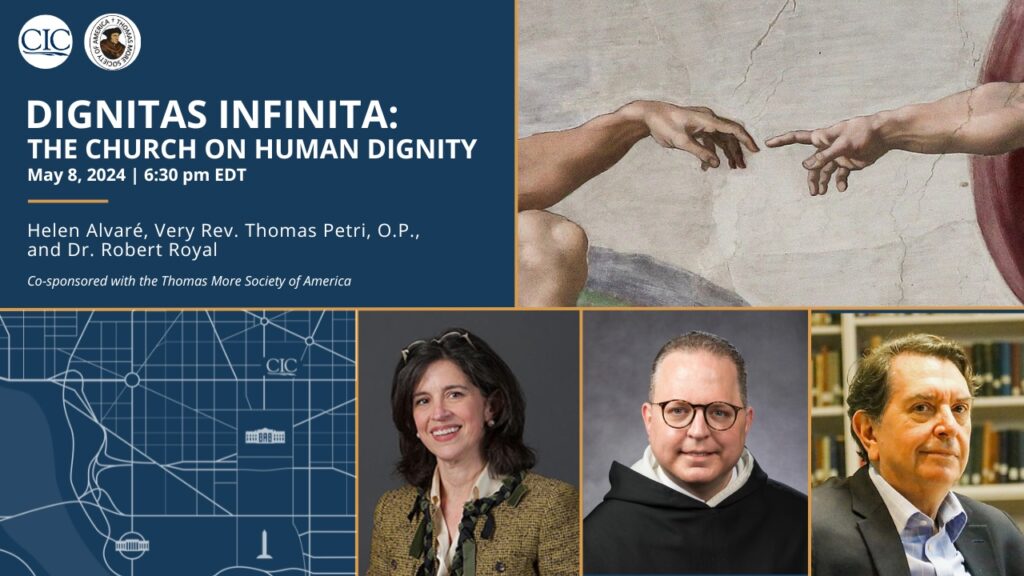
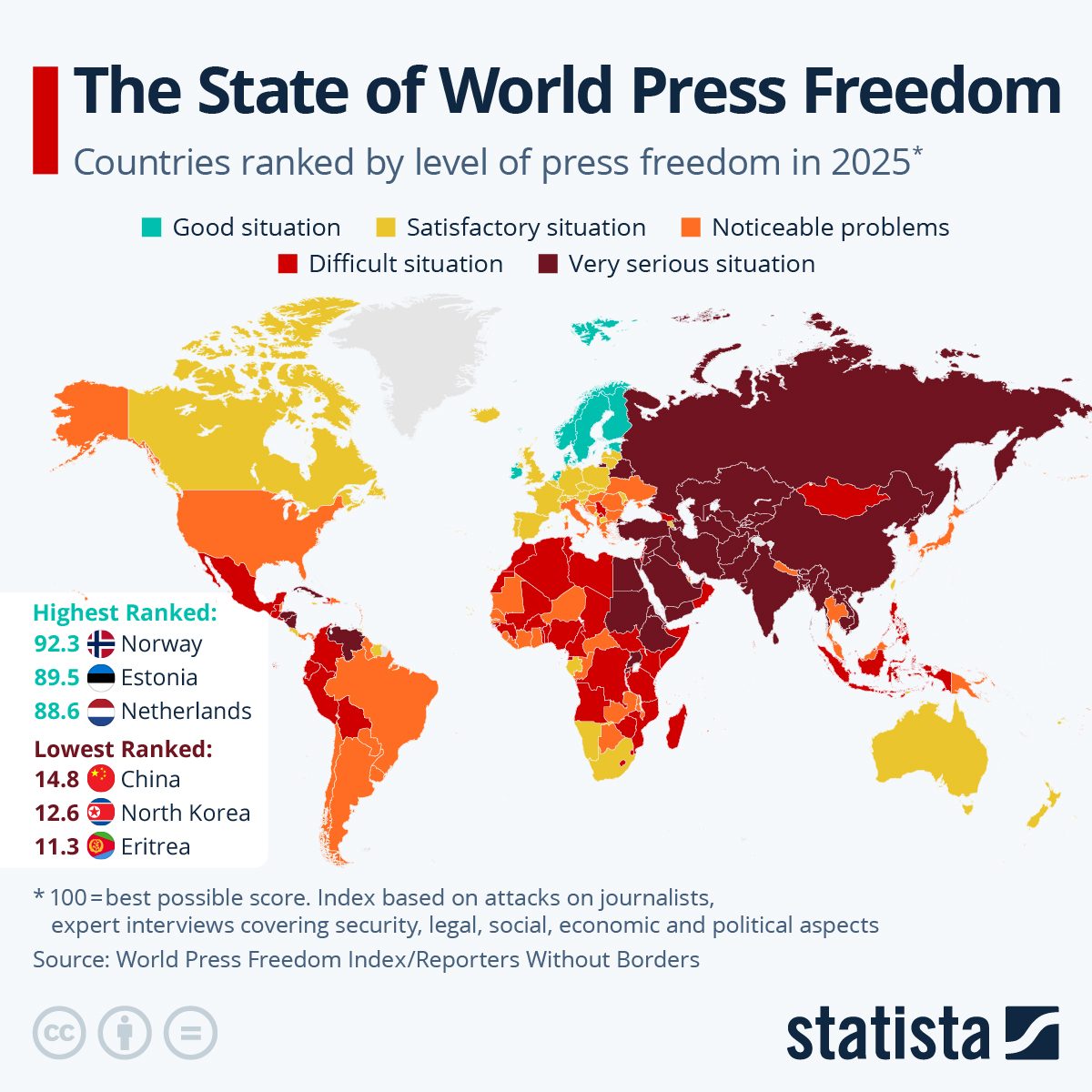

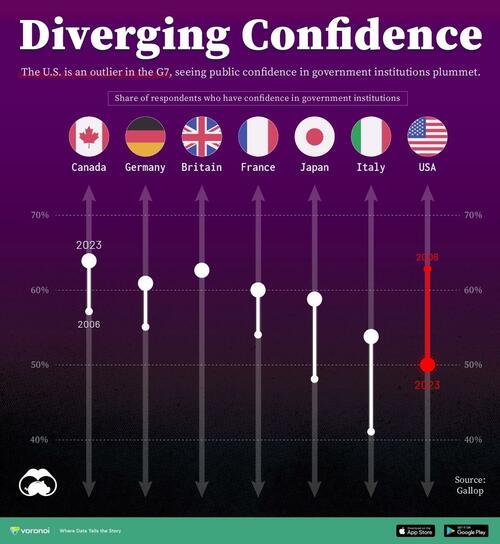













 Dr. Dermot Kearney/Lisa Bourne
Dr. Dermot Kearney/Lisa Bourne





